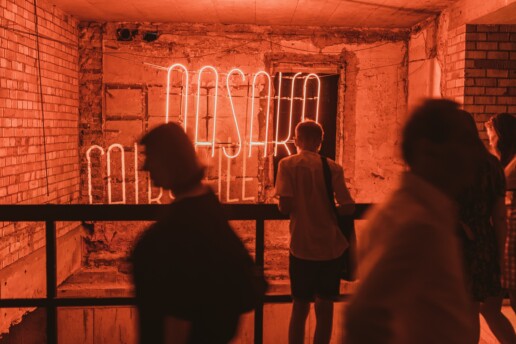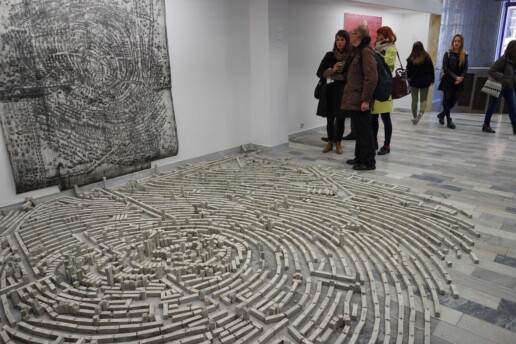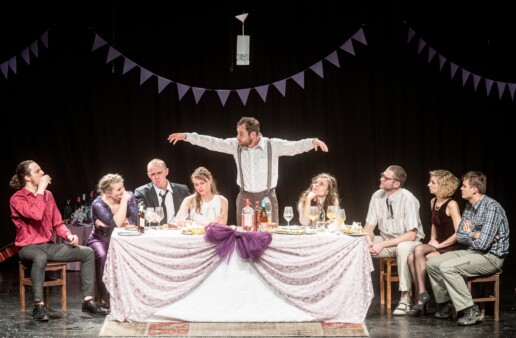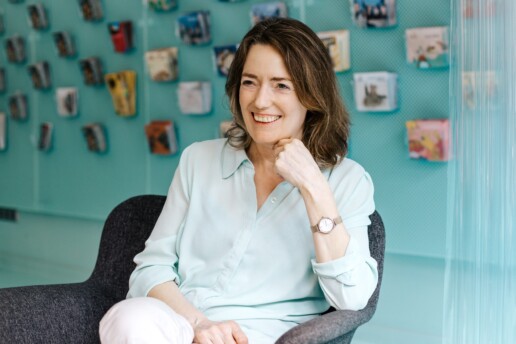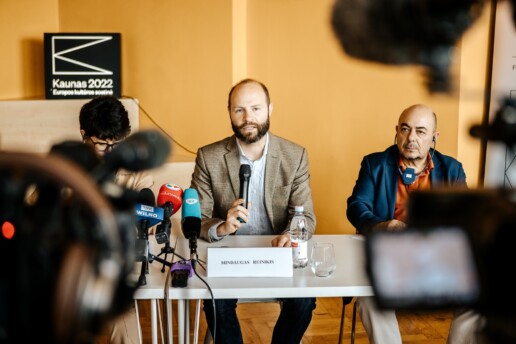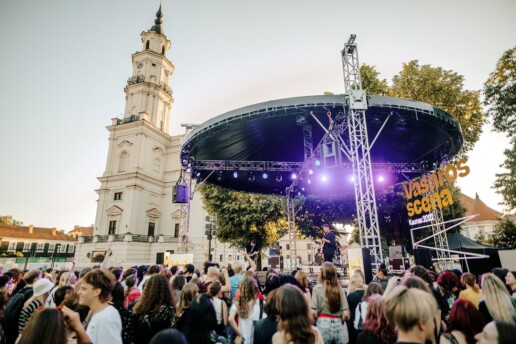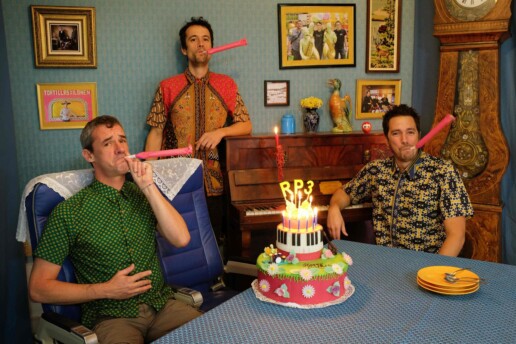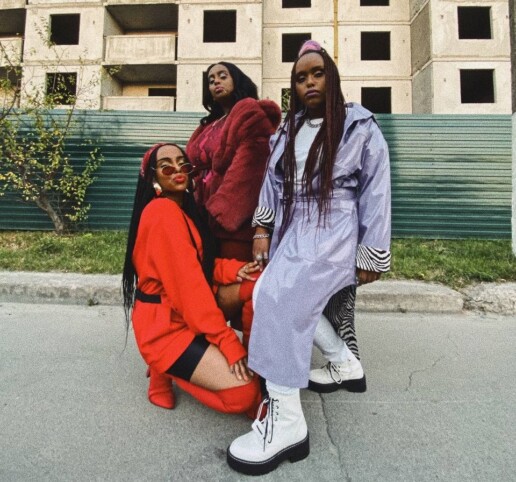Japanese music concert. Tsugaru shamisen & taiko
This year marks the 100th anniversary of friendship between Japan and Lithuania. To celebrate this occasion, we are happy to invite you to a Japanese music concert, which will take place on September 2, 18:00 at Business Leaders Center BLC, lobby of the Building D (K.Donelaičio g. 62).
The concert will be provided by Hibiki Ichikawa (Japan), a traditional Japanese three-stringed instrument Tsugaru shamisen artist, together with his student Luke Burns (United Kingdom).
The concert is free of charge, however, the number of seats is limited.
Hibiki Ichikawa is a London based Tsugaru Shamisen player with over 15 years of experience in playing this unique and fascinating instrument. He first came to the United Kingdom in 2011. Officially recognized as a world leading talent of Tsugaru Shamisen, Hibiki regularly performs across the UK and Europe.
His professional activities include teaching more than 20 students and collaborating with several musicians and artists in a variety of projects. In 2016, he took part in the recording of the soundtrack for the BAFTA-winning stop-motion animated film “Kubo and the Two Strings”, produced by Laika Studios.
Luke Burns has been studying Tsugaru Shamisen and Taiko drums in London for 4 years. Luke is a student of Hibiki Ichikawa, the only professional Tsugaru Shamisen player in Europe, and learns Taiko from Liz Walters with the “Tamashii School of Taiko”.
Along with Joshua Green, another of Hibiki’s students, Luke is part of the duo "DENSHONEN", mixing Tsugaru Shamisen with Taiko and Guitar.
Both Hibiki and Luke have been appointed by “Nike” as their official brand ambassadors for DUNK shoe series.
Lets enjoy the sound of traditional Japanese music!
The event is organized by the Embassy of Japan in Lithuania.
Kaunas 2022 to Gather Litvaks From all Over the World to Their Ancestral Land
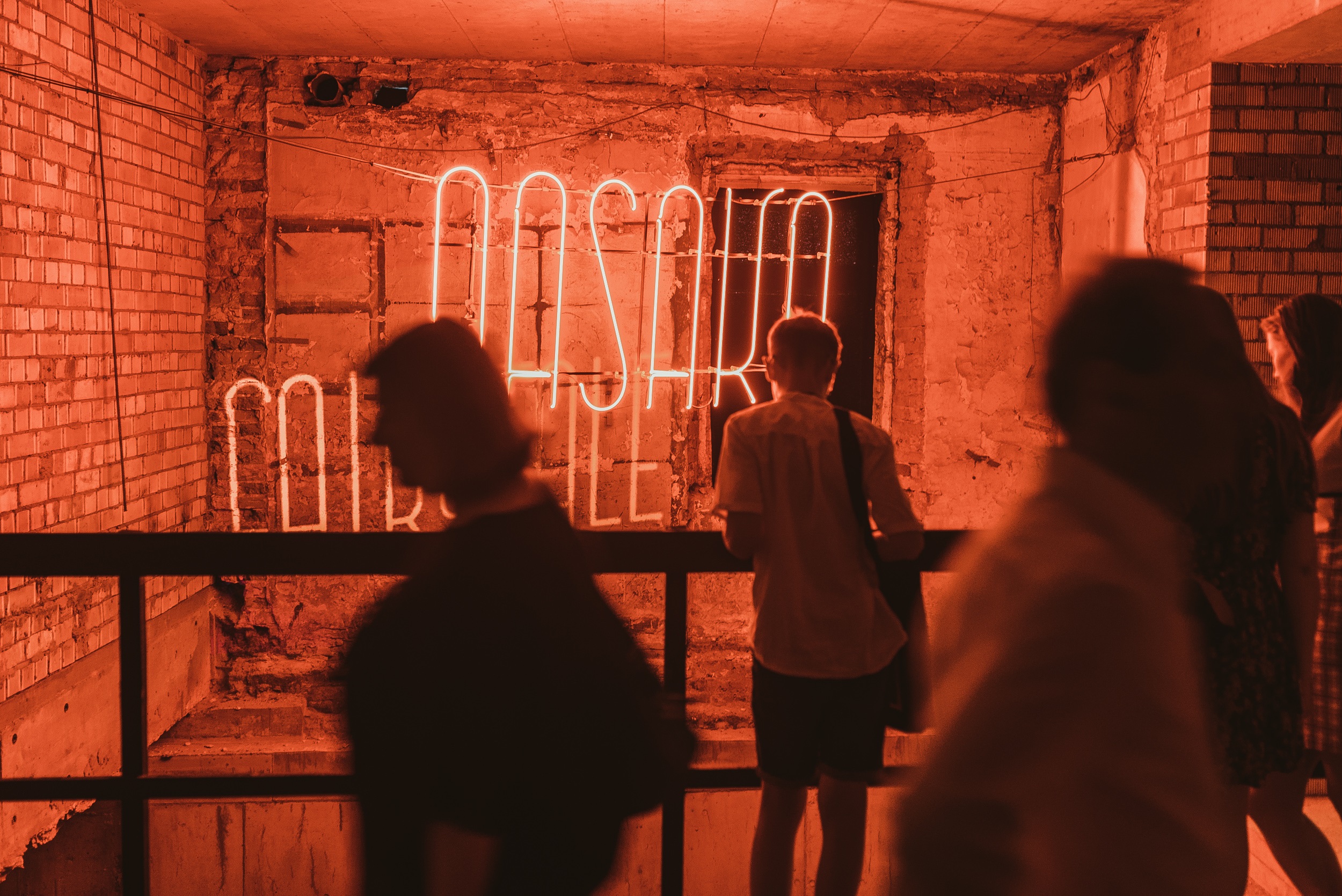
“For me, this forum is like a wrap-up of the entire Jewish memory programme of Kaunas - European Capital of Culture. It is the culmination of our many years of efforts to build bridges of cooperation and dialogue,” says Daiva Price, the initiator of the Litvak Culture Forum and the curator of the Kaunas 2022 programme Memory Office. The event will welcome Litvaks returning to their ancestral land or arriving here for the first time on 29-30 September.
Before the First World War, about 2 million Litvaks - the name used by Jews of the region - lived in the former lands of the Grand Duchy of Lithuania, in the eight provinces of the Russian Empire. 2 million is 12% of the population. In Kaunas or Kowno, the centre of the gubernia, the Jewish population was as high as 35.32%, and today it’s just a few hundred people.
The Litvaks spread worldwide in the second part of the 19th - the beginning of the 20th century. They remained the smallest Jewish group after the Holocaust. Today, Litvaks live in Israel, the USA, South America, South Africa and other countries. Many of them have roots in Kaunas. As the European Capital of Culture 2022, the city is hosting the forum as the first event of such kind.
The two-day event in the Great Hall of Vytautas Magnus university will feature a rich cultural programme and discussions between renowned artists, scholars and representatives of the world of culture on what it means to be a Litvak and the search for a common Lithuanian and Jewish identity. It will ask whether art helps us to remember and whether perpetuating memory can help us to build a better future and promote openness and dialogue.
The Litvak Culture Forum is part of the Kaunas 2022 CityTelling Festival, which will run until November. According to the curator of the Memory Office programme, the leitmotif of this year’s festival - a journey home - means not only a more profound knowledge of the city, its history and oneself in it but also perhaps the first visit to the land of one’s ancestors. A land that was too painful to enter for years. This has happened to some world-renowned artists featured in Kaunas 2022, such as William Kentridge. His exhibition at the National M. K. Čiurlionis Museum of Art is busy throughout the year.
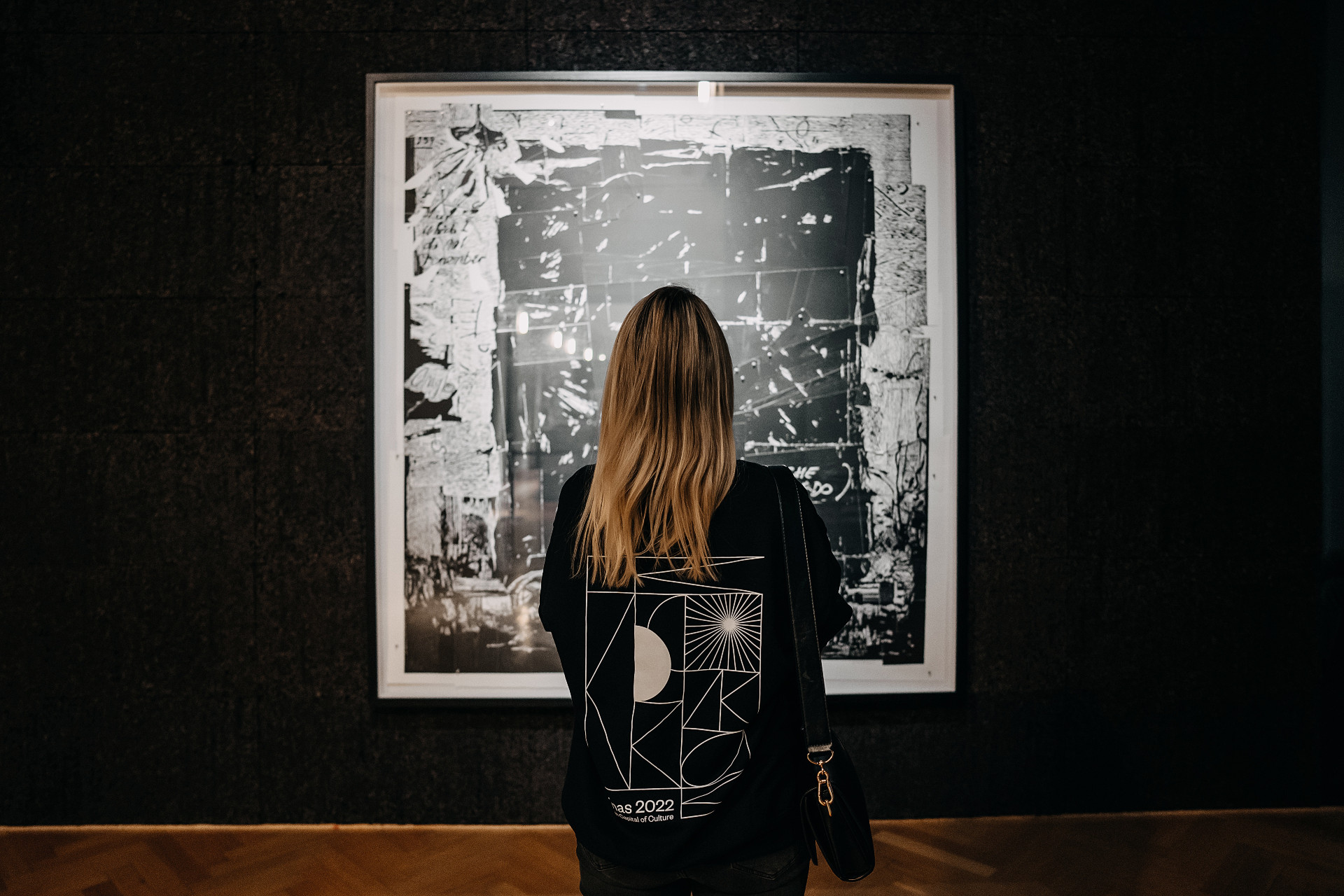
This year has also been an opportunity for artists such as Jenny Kagan, Philip Miller, Bruce Clark, Marilia Destot and others to come and return to their ancestral land with their art. Many of them will share their experiences in the programme of the Litvak Cultural Forum. They will be joined by stars from the academic world, members of the Advisory Board of the Litvak Cultural Forum - Prof. Antony Polonsky, Prof. Peter Salovey, Prof. Tsvia Walden and others.
The two-day Forum programme will be enriched by exhibitions, performances and concerts dedicated to Jewish memory. The calendar includes events such as the interactive exhibition “Out of Darkness” by the UK artist Jenny Kagan, the Threshold installation route reminiscent of the Mezuzah tradition by Jyll Bradley, a photographic exhibition of the interwar photographers Mausha Levi and Shimon Bayer, and the paintings of Simon Karczmar. On 29 September, a concert of Yiddish songs by Marija Krupoves will take place at Žalgirio Arena, dedicated to the Jewish memory of the city and the unique spirit of Kaunas.
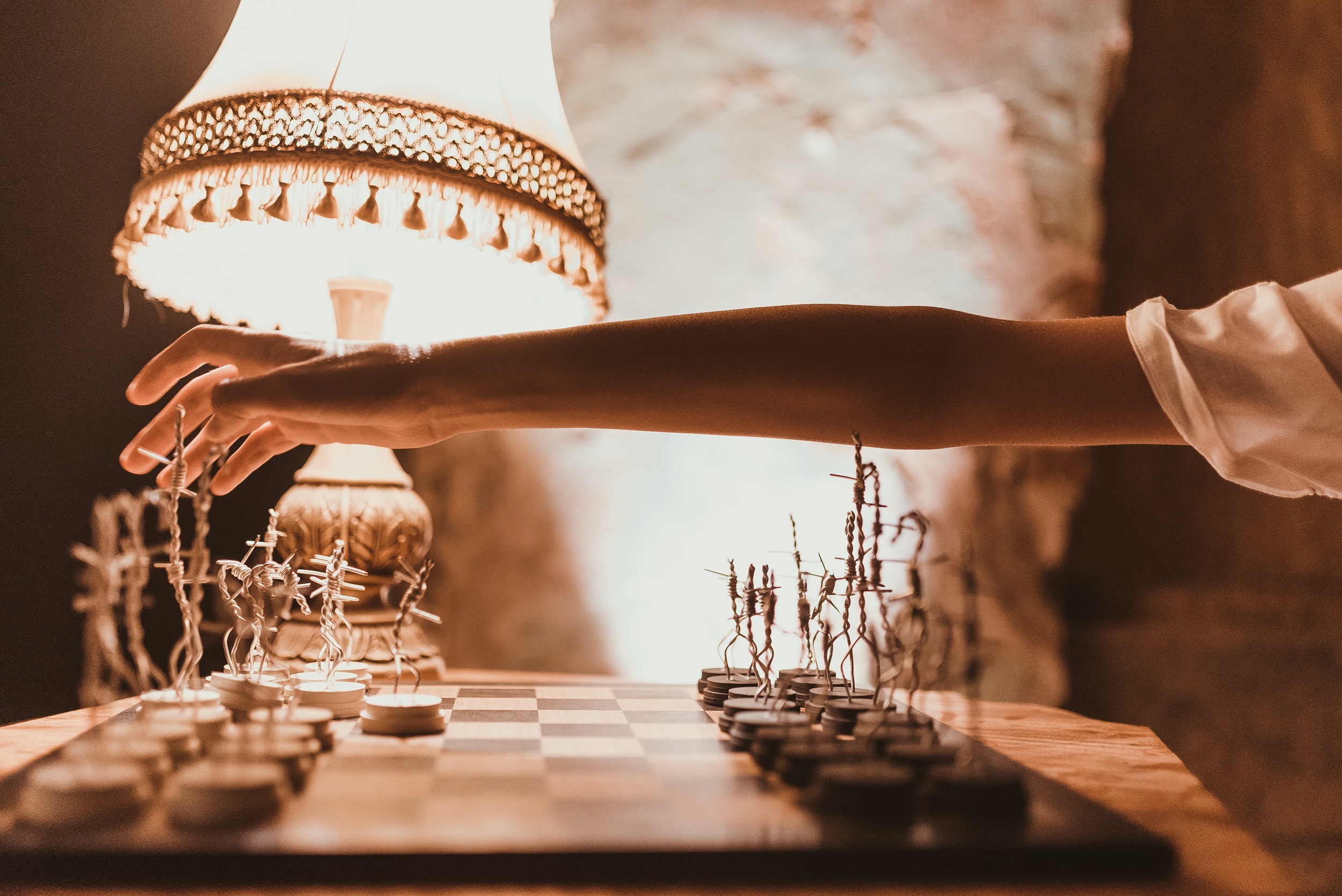
On 30 September and 1 October, a special premiere which took a few years to prepare will be held. It is the Kaunas Cantata by the South African composer Philip Miller and Jenny Kagan. In the language of music, texts and images, it tells the complex story of historical upheavals, the Holocaust, deportations and personal traumas, and the traces they have left in the lives of generations and individuals. A spectacular labyrinth of music and images is created in collaboration with Lithuanian and foreign artists of various genres.
The premiere will be performed at Žalgirio Arena by more than 200 musicians, the Kaunas City Symphony Orchestra, professional and community choirs and ensembles. “The cantata invites us to open up difficult and traumatic themes, and it invites us to confront ourselves, to talk about difficult choices in the face of dramatic events. It is therefore particularly relevant in the context of today’s war,” says Ms Price.
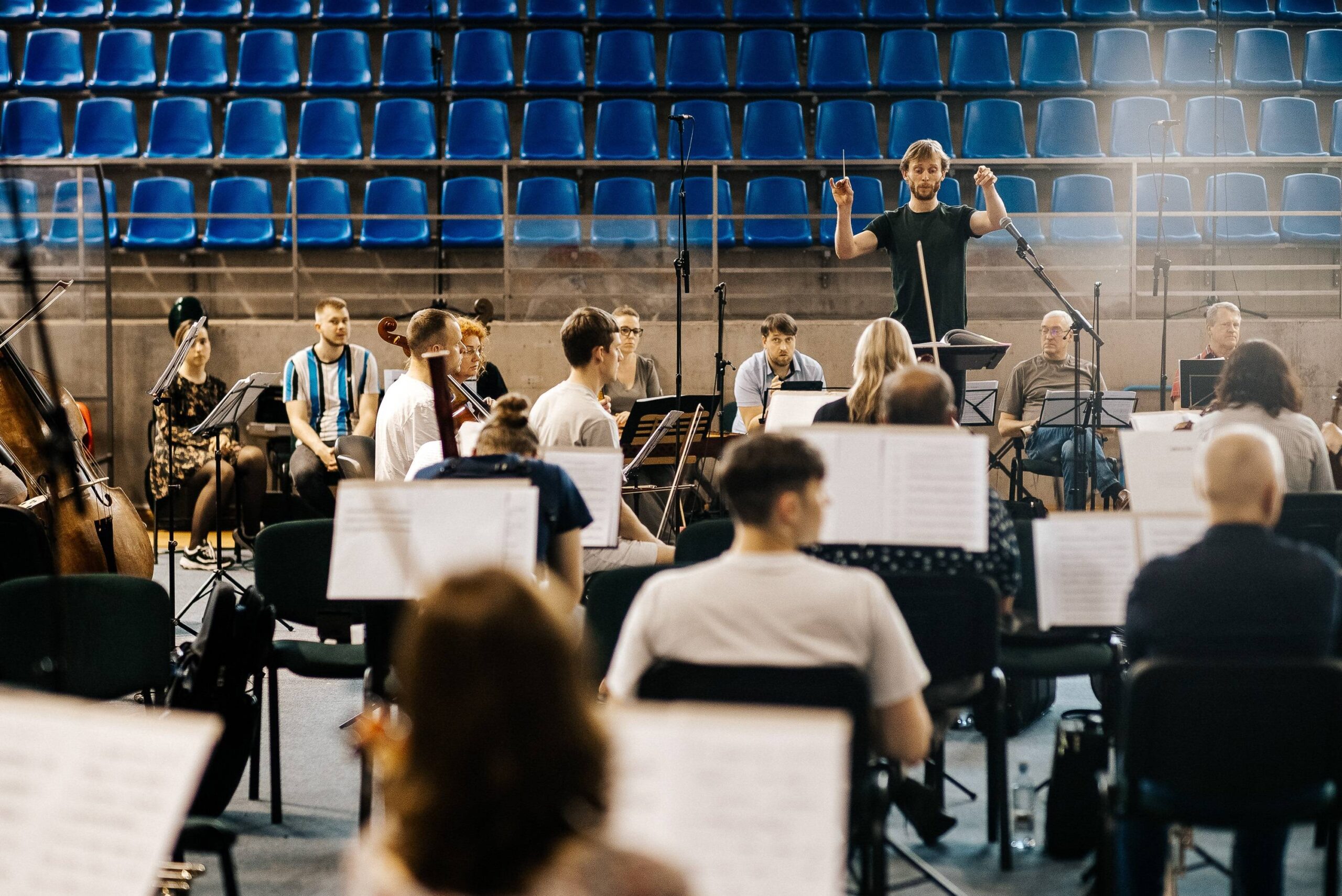
The patron of the Litvak Cultural Forum is Prime Minister Ingrida Šimonytė. Honorary Patrons are Prof. Liudas Mažylis and Faina Kukliansky, President of the Lithuanian Jewish Community. The forum is partnered with Vytautas Magnus University and Kaunas Jewish Community.
The Kaunas 2022 Litvak Culture Forum programme is available here, and registration is now open. For the complete Kaunas 2022 programme, please visit www.kaunas2022.eu or the mobile app.
UKRAINE! UNMUTED: contemporary Ukrainian art in Kaunas – European Capital of Culture 2022
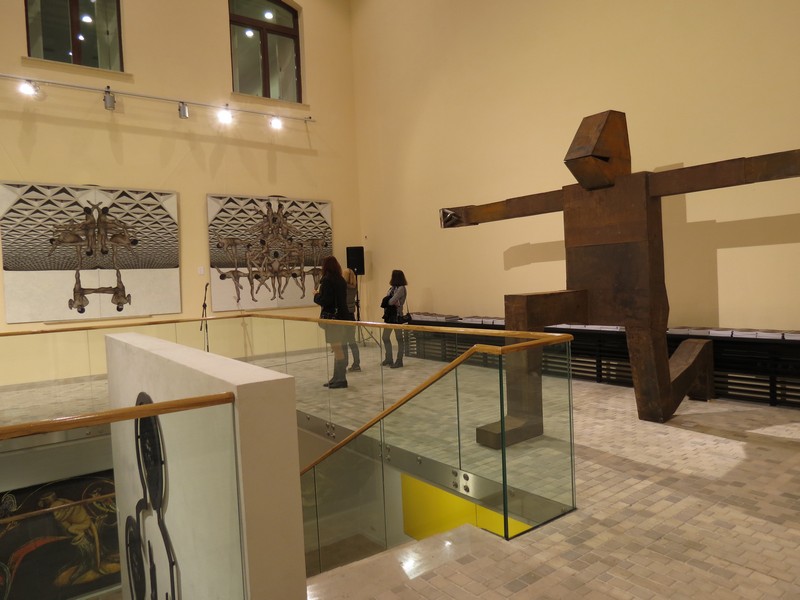
This fall, Kaunas will host a triennial of contemporary Ukrainian art — Ukrainian Cross-Section 2022. UKRAINE! UNMUTED presents the works of contemporary artists. Other parts of the project include discussions and a book of essays.
Ukrainian Cross-Section, a triennial of contemporary Ukrainian art, started as an attempt to expose what Ukrainian art has been with art telling for itself. The idea of Ukrainian Cross-Section is to present contemporary Ukrainian art to the new audiences outside of Ukraine.
The Fifth Ukrainian Cross-Section UKRAINE! UNMUTED will take place in fall 2022 in Kaunas (Lithuania). The project presents the works of Ukrainian artists. The curators are Vlodko Kaufman, Serhiy Petlyuk, and Oksana Forostyna, and Lida Savchenko-Duda is the manager of the triennial.
"Ukrainian voices became better heard when people noticed the explosions and turned on the sound. The war is the price Ukraine paid to be in the spotlight not only of reporters from around the world but also of cultural institutions and educated classes, of people who shape the artistic canon, create and destroy hierarchies, and declare cultural phenomena interesting and valuable or doomed to oblivion. Ukrainian artists have their scale of dividing times into good and bad: the periods of prosperity were usually the pauses between wars and repressions. And they fruitfully used that time, especially during the last 30 years. Though organically woven into the overall canvas of European culture despite all the obstacles, this art remained in the so-called blind zone, always present yet invisible. Ukrainian Cross-Section is an overview of what could not be heard behind transparent walls and seen behind optical illusions, a survey of what brings understanding closer," says the curators’ text for UKRAINE! UNMUTED.

Ukrainian Cross-Section 2022 has several components. The creative-cultural space “CulturEUkraine”, the former Kaunas Central Post Office, hosts the exhibition. The theme UKRAINE! UNMUTED will be explored during a series of discussions with speakers from Ukraine and abroad, as well as in a bilingual Ukrainian-English collection of texts by Ukrainian art critics, philosophers, and writers. The particular focus is the context of colonialism, and the reinterpretation and actualization of some special Ukrainian artistic phenomena of the 20th and 21st centuries.
The triennial is supported by Kaunas 2022 (Lithuania) and ZMIN Foundation (Ukraine).
The idea came up more than ten year ago in Lviv, in the milieu of Dzyga Art Association, one of the iconic cultural institutions in the city and Ukraine, and it was developed in cooperation with partners from Lublin, the Trans Kultura Foundation. It started with an ambition to grasp and to outline the “Ukrainianness” in contemporary art, to provide a meeting point for those authors considering Ukraine not just a territory, but “their important territory,” the territory for interacting, experiencing, and changing themselves.
The Cross-Section is a curatorial project. Now Ukrainian NGO Institute of Actual Art and the Cultural Strategy Institute, the municipal institution, are evolving the idea of Ukrainian Cross-Section.
Back in 2010, the first triennial in Lublin was an attempt to grasp the identity of Ukrainian contemporary art. Then in 2013 the self-analysis was paramount with the Lyman project in Lublin. And the next triennial reCREATION was a part of the European Capital of Culture 2016 program, the Lviv Month in Wroclaw: an exhibition, a retrospective of Ukrainian media art, and performances. It reflected on the state of the art in Ukraine while facing war and changes. In 2019 the Ukrainian Cross-section as a part of Culture Congress in Lviv was a chance for a critical revision of how Ukrainian art could interest global audiences.
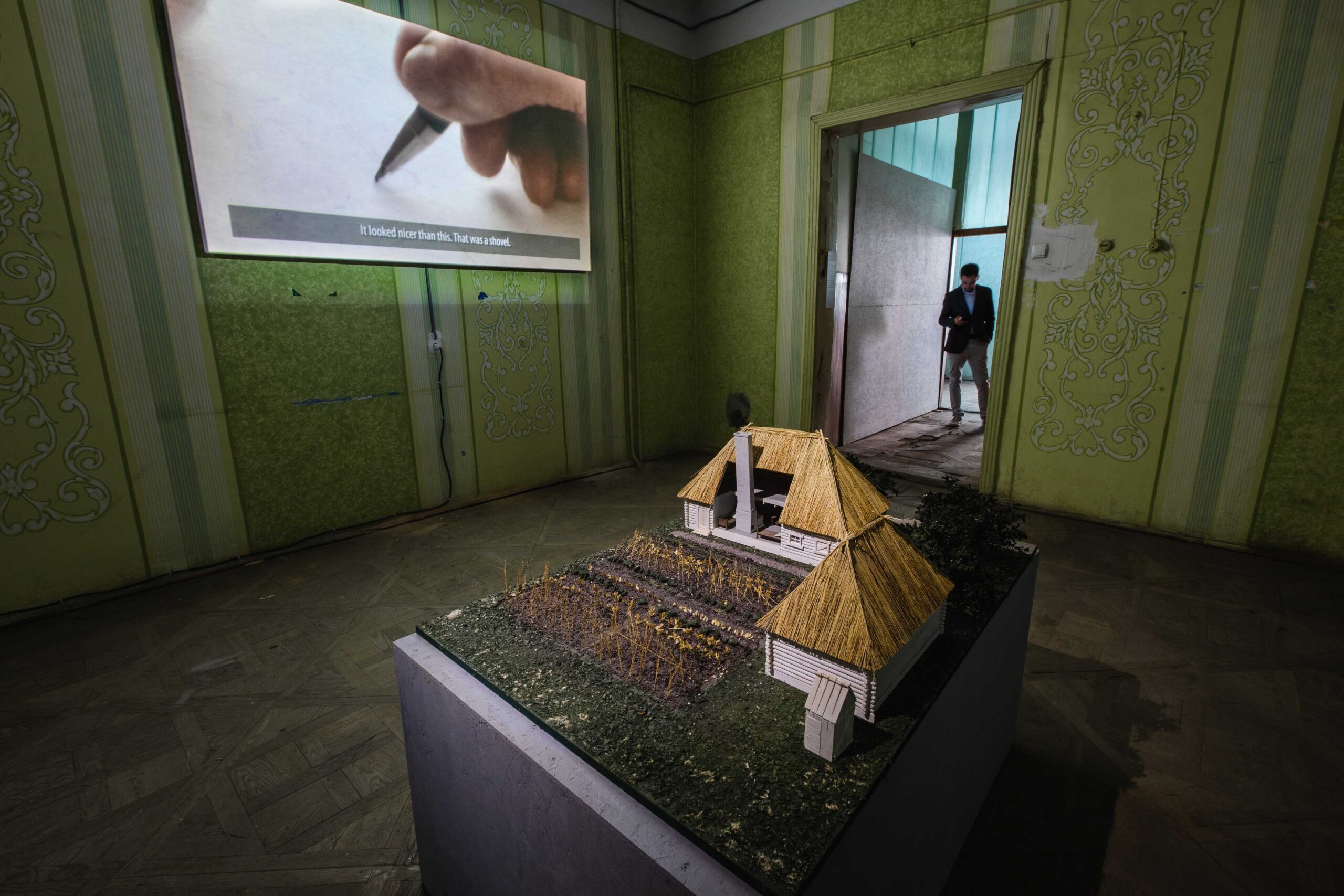
Every triennial welcomed artists from different cities of Ukraine. The reference point is the transformational processes of Ukrainian art in media, topics, discourses, interpretations, names, (im)mutability of traditions, and experimentation. Since 2010, Ukrainian Cross-Section has presented 172 art projects as well as works of 123 authors and art groups from Lviv, Kyiv, Kherson, Uzhhorod, Kharkiv, Odesa, Ivano-Frankivsk, Irpin, Sudova Vyshnya, Drohobych, Dnipro, Chernivtsi, Lutsk, Cherkasy, Zaporizhia, Donetsk, Vinnytsia, Sumy, and Poninka.
_______
The Institute of Actual Art (Lviv) is a non-profit organization for the development, promotion, and popularization of contemporary art. It works with Ukrainian Cross-Section, the Week of Contemporary Art, Days of Performance Art in Lviv, the School of Performance, and Transgressions, and other projects.
The Cultural Strategy Institute (Lviv) is a municipal institution established to coordinate the implementation and monitoring of the Lviv Culture Development Strategy for 2025. The mission of the Cultural Strategy Institute is analytical support for institutions and initiatives that operate in culture, enhancing institutional capacity and fostering the potential of Lviv cultural centers. https://isc.lviv.ua/en/
Virmenska 35 is an independent non-profit organization established in Lviv in 1998 to promote the development of multi-genre modern art: visual art, music, literature, theater, cinema, and multimedia. It aims at enhancing international cooperation in culture and realization of social and cultural interests of society.
ZMIN Foundation is a private Ukrainian foundation established to strengthen effective social transformation and sustainable development. The vision of the foundation is a proactive, inclusive civil society, responsive and able to join forces for a better tomorrow. https://www.zmin.foundation/eng/home-eng
Kaunas 2022 is the organization in charge of implementing the program Kaunas — European Capital of Culture 2022. The organization aims at the union of cultural organizations and creators in the Kaunas region, Lithuania and Europe to reveal the diversity of European cultures and local identity, which would involve local people and partners from various sectors. https://kaunas2022.eu/en/
Orchestras, Electronic Music and Lithuanian “Wedding” on the Kaunas 2022 Summer Stage in August
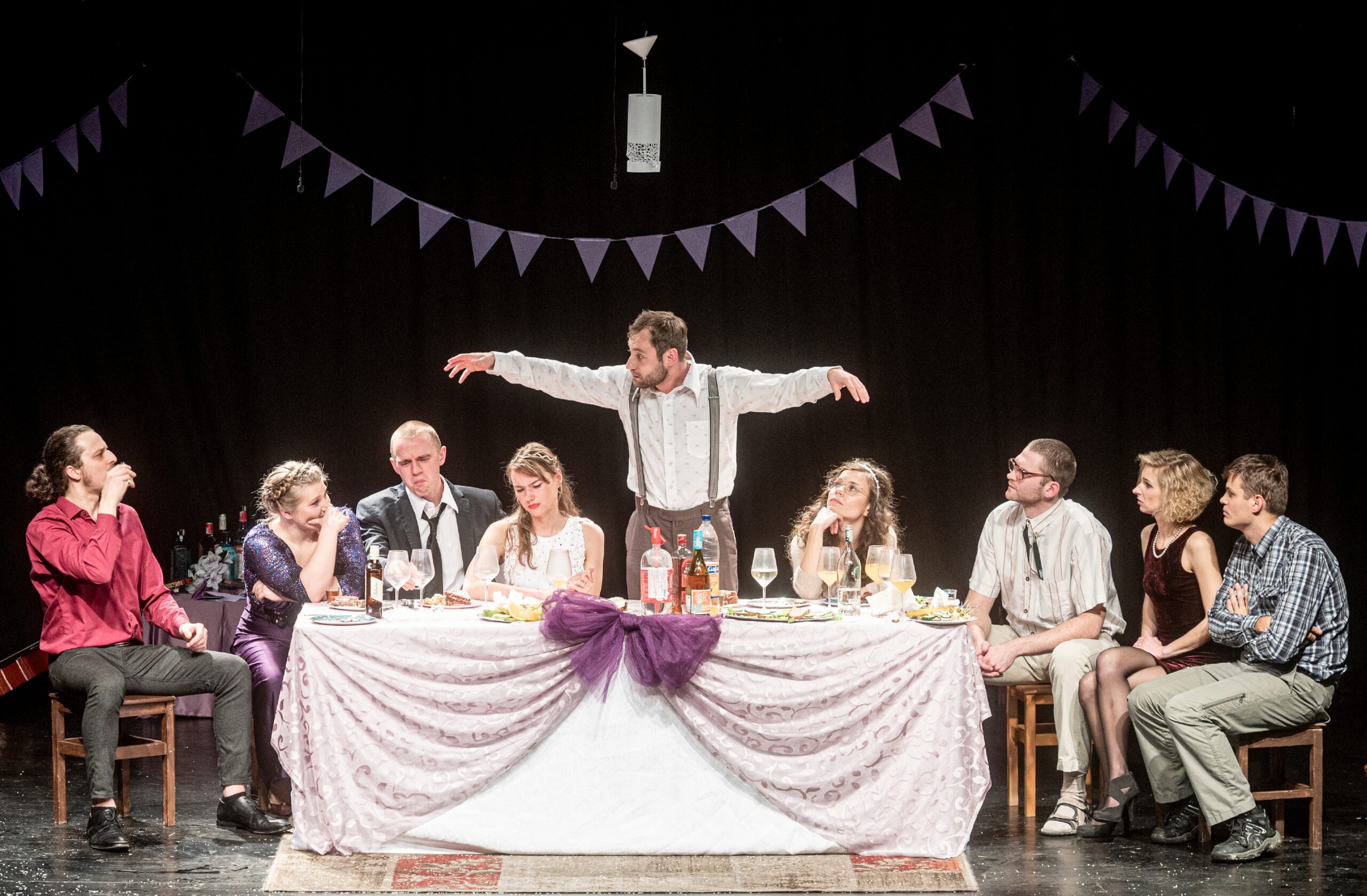
With Autumn and the season of events under the roof getting closer, every day is a fantastic opportunity to enjoy the sounds of music and culture in the open air. Running for the fourth month, the Kaunas 2022 Summer Stage at the Town Hall Square will offer more than a dozen events in August. The programme includes premieres, international friendships and a special evening dedicated to war-torn Ukraine.
A Unique Debut With an Orchestra
“This is a show I have been looking forward to since December when I first saw the teaser for “Laws of Distraction”. That was enough to make me realise that this will be an exceptional project. The recording took my breath away, and Kaunas will be the first time “Laws of Distraction” will be played live in front of an audience. This event is not to be missed - it’s the biggest cherry on the cake of the Summer Stage,” Eglė Aleksandravičiūtė, the producer of the Kaunas 2022 Summer Stage events, intrigued, talking about the gift arriving in Kaunas on 5 August. Monika Zenkevičiūtė, who hides under the Monikaze pseudonym, is the winner of this year’s MAMA Electronic Music Artist of the Year award and is of interest to a growing number of music lovers. “Laws of Distraction” is her solo programme with the St. Christopher Chamber Orchestra.

The Kaunas 2022 Summer Stage traditionally opens before the weekend - the beginning of August is no exception. On Thursday, 4 August, a delicate, intimate, and incredibly captivating musical evening led by Latvian vocal improvisation artist Dana Indāne-Surkienė will take place. Dana Indāne-Surkienė combines free voice improvisation and professional vocal techniques in her works. The artist will present her album “Gaidību dziesmas / Songs of Mother and Field”, dedicated to the subtle connection between an expectant mother and her child.
On 6 August, the Summer Stage will be open for young Lithuanian alternative artists. The soundtrack of the evening will be created by one of the most exciting performers in today’s Lithuanian music scene Goda Yorke (Goda Sasnauskaitė), who stands out for her artistry and vocal range, Gruodis, which started as a solo project and became an indie/postpunk band, and Orai, who stand for fast guitar dance music.
Portuguese and Lithuanians Evenings in the run-up to the Feast of the Assumption
Probably not many people know that Kaunas, which was full of diplomats between the two world wars, is today home to the Portuguese Consulate. At the invitation of the country’s Honorary Consul, Dalius Raškinis, and the Lisbon-based Camões Institute, the Lavoisier project will perform on 11 August in Town Hall Square. The duo introduces itself with a quote by the French scientist Antoine Laurent de Lavoisier: “In Nature, there are no losses; there is no creation, only transformations”. The Portuguese also draw on the spirit of tropicalismo and try to see music not only as a matter of individuality but as a full sense of awareness and presence in the world we’re living in right now.
Right before the long weekend of Žolinė (The Feast of Assumption), on 12 August, the group “Graži ir ta galinga” (Beautiful and Powerful), formed in the Klaipėda Youth Theatre, will give a concert at the Town Hall Square. The actors and musicians ask - what is common between a Renaissance beauty, a writer in a headscarf and a Soviet heroine? The three of them, invited by a group of friends, rush on stage to tell everyone what it means to be a woman in Lithuania and to take them not only to different historical periods but also to different stages of a woman’s life with varying styles of music.
Lithuanian “Wedding” and Guests From Germany
“A theatre without “Wedding” is not a theatre. The Germans have Bertolt Brecht, the Poles have Witold Gombrowicz and Stanislaw Wyspianski. We have OKT’s “Wedding,” theatre director Oskaras Koršunovas once said after the performance. Although based on Brecht’s play, the Lithuanian production is unique; the personal experiences of the artists and the reality around them are the essential material for the production. The actors react with lightning speed to the constantly changing societal events, and each time the audience is treated to a different evening - topical, full of recognisable situations and engaging. The Kaunas version of “Wedding” will be performed on 18 August in Town Hall Square.
On 19 August, the Munich female duo Umme Block will perform in Kaunas for the first time. Their visit results from Kaunas 2022’s friendship with Nürnberg POP Festival, an important showcase event in southern Germany. The duo creates vast soundscapes full of high tension. It’s a unique sound made of vocals, analogue synthesisers, electric guitar and beat machines, dreamy, melancholic, dramatic and thrilling.
Džiugas Širvys, lead singer of the mathematical rock band jautì, which performed at the Summer Stage in June, will present his solo work on 20 August. The artist does not shy away from the influences of the 1970s; his works subtly combine popular music with country and alternative music.
An Evening for Ukraine’s Independence Day

On Wednesday, 24 August, the Town Hall Square in Kaunas will be painted blue and yellow. A concert dedicated to Ukraine’s Independence Day will take place. The Summer stage will host the violin and bayan duo YeS Duet from Ukraine and the VMU Chamber Orchestra. The concert programme will include works by Ukrainian composers, famous classics by A. Vivaldi and J. S. Bach, and compositions for violin, bayan and chamber orchestra by composer Jievaras Jasinskis, specially written for the YeS Duet’s concert tour through Lithuania. This event expresses Kaunas 2022’s solidarity with Ukraine in war. Since March, the project has been running the CulturEUkraine centre in Kaunas Central Post Office, dedicated to war refugees who want to continue their favourite creative activities or start new ones.
Friends from Estonia
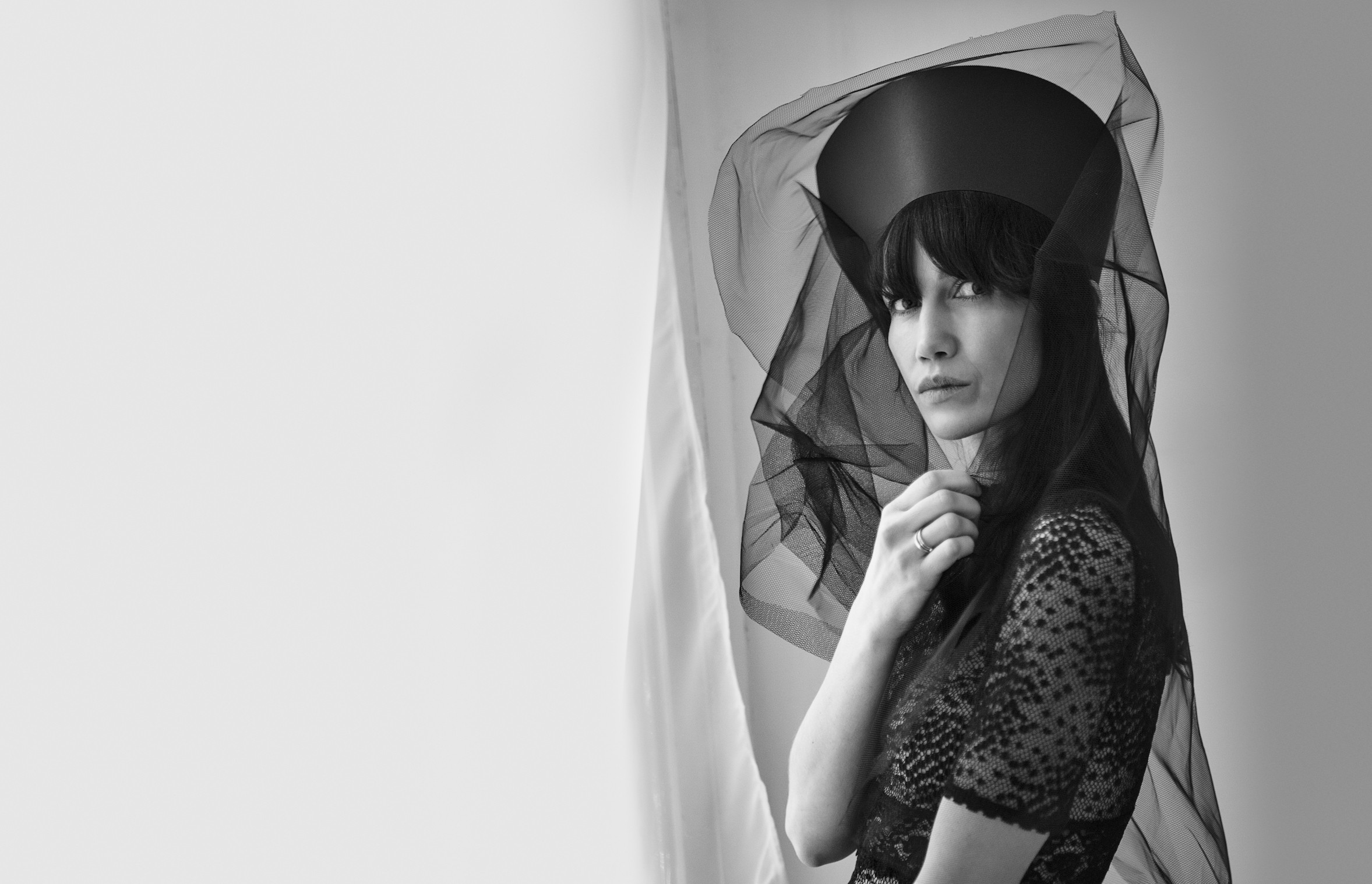
In less than two years, Tartu, an old friend of Kaunas, will become the European Capital of Culture. Have you ever heard that there used to be a restaurant called Tartu in Kaunas and a place named after Kaunas in Estonia? Artistic and cultural exchanges between the cities have also been taking place for years, and this tradition will continue with two end-of-summer concerts.
On 25 August, Anna Kaneelina will perform in Kaunas with her band. Kaneelina released her debut album in 2019 and charmed the audiences with her otherworldly stage presence and original ways of expressing herself. Bravely sharing her inner world and pouring into music both the pain and the beauty of life, she transfers the audience to a dreamlike wilderness.
On 26 August, Kaunas 2022 Summer Stage will be taken over by Jonas Kaarnamets. Now performing under the alias of Jonas f.k, he has been active in the Estonian music scene for almost ten years. In addition to being the founding member of the alternative/pop group Frankie Animal, he has also worked with some of the most successful and current Estonian artists. His solo creations are a melting pot of contemporary pop and darker electronic music, very well received by Estonian music critics.
All Kaunas 2022 Summer Stage events are free of charge. Concerts and other events at Kaunas Town Hall Square are planned until Autumn.
The European Capital of Culture programme in Kaunas and the Kaunas Region continues throughout the year, with hundreds of traditional and debut events planned for 2022, including exhibitions, festivals, performances and other activities created by local and international artists and Kaunas communities. For the full Kaunas 2022 programme, visit www.kaunas2022.eu or the mobile app.
Jenny Kagan on the Exhibition “Out of Darkness”: “Ultimately, my Parents Survived, and Ultimately, it’s a Love Story.”
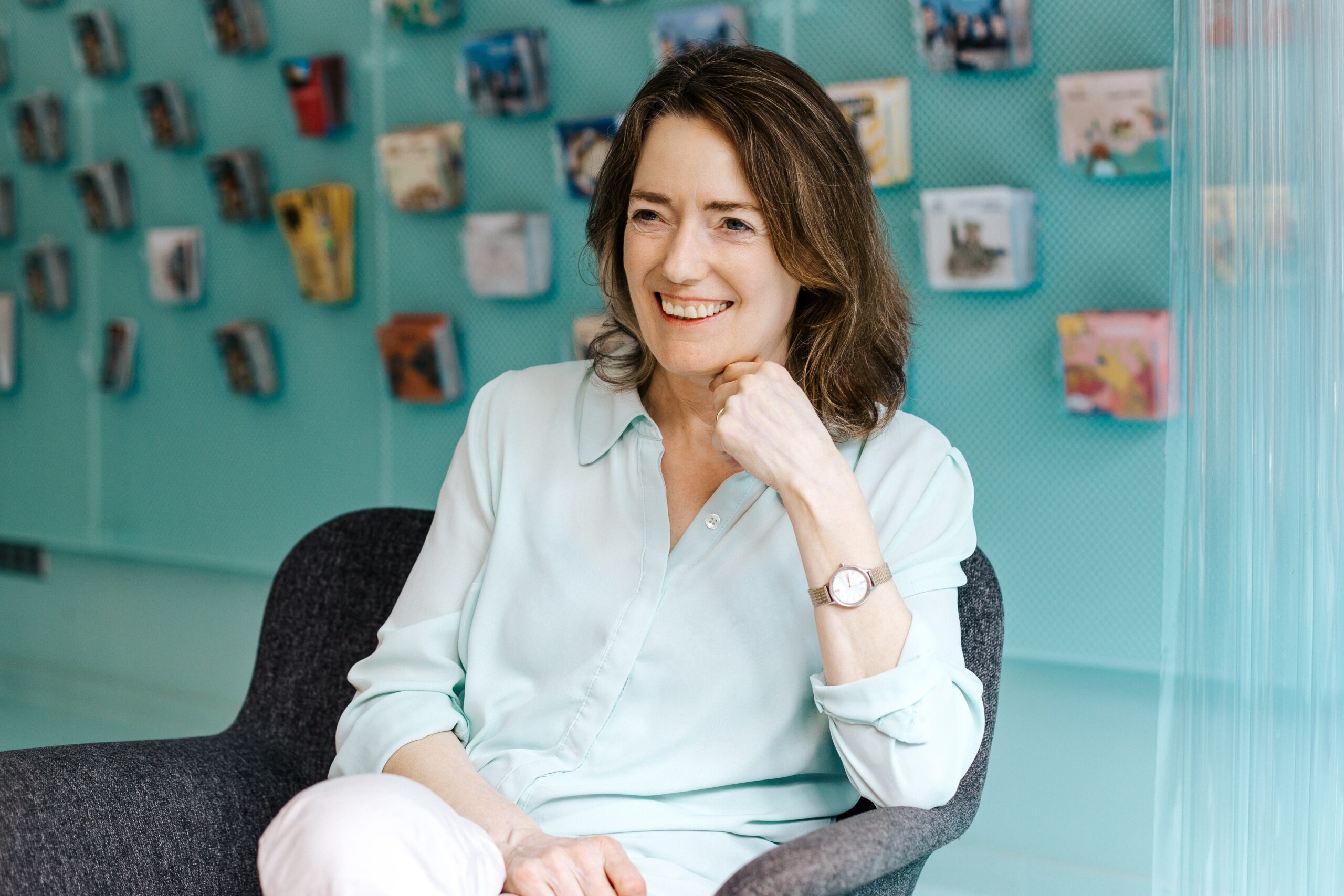
As Margarita Štromaitė wrote in her memoirs, during the Second World War, the lives of her, her future husband Juozas Kaganas, who she met in the Kaunas ghetto, and his mother Mira were saved by the family of Vytautas Rinkevičius. “<...> in spite of the mortal danger that threatened his entire family he built and equipped a shelter for us in the attic of the foundry. It was made in a part of the ridge separated by a false wall.” It was not until twenty years after the war that Margarita met her only relative who had survived the Holocaust, her brother Alexander Shtrom. In 1965, Margarita and Juozas, already known as Joseph had a daughter, Eugenia. Or Jenny.
Jenny Kagan presents the exhibition “Out of Darkness” in Kaunas, the European Capital of Culture, from 4 August. With sensitive artistic solutions, texts and sound, she reveals her family’s poignant story, at the same time uncovering the unknown pages of Kaunas’ memory. Nevertheless, it is a story about humanity and the light necessary for our survival as a civilisation. The exhibition at Gimnazijos St. 4 is part of the CityTelling Festival initiated by Kaunas 2022. The artist, who previously worked lighting designer in the theatre for many years, has agreed to tell us more about her creative journey.
“Out of Darkness” in Kaunas was announced a few years ago already. Did the past pandemic months influence the exhibition?
Securing a building took a lot of time – the one on Gimnazijos St. is the third one. In the first one, we couldn’t negotiate a deal with the owners that would work. I had already prepared a design... I visited Lithuania during the pandemic because my aunt Irena Veisaitė died. It was December 2020, and I also wanted to see the second building the team found. It wasn’t anywhere near as good as the first one, but by that point, I was like, “We have to start.” I went away and designed the show for there. I made a model and did it all. Then the owners withdrew… And this building came up, and last summer, we finally were certain we had it. The show is very much about the venue.
The building is close to the synagogue you worked in during the Kaunas Biennial.
I know! My mom went to the school over the road, and my grandfather lived a few hundred yards away at one point, so it’s a really great location. Its owner is an amazing person. They asked me, which bit of building I would want to use, and I asked for all of it. There is no way to get between the spaces on the ground floor of the building, and there are no stairs to go upstairs. I came up with this crazy idea to build corridors to connect the parts. We decided to build these scaffolding corridors so we’ll use all three parts and you’ll come out and into the car park and along a corridor and then onto the street into a corridor and then into the other building so it’ll be quite an adventure. I’m banking on the fact that it’ll be so interesting just going to the building; it doesn’t really matter if the work is not fabulous (laughs).
But really, it does help. When I did the show in the UK in 2016, the building was half of the atmosphere. It’s just exciting to go somewhere and explore it, so you start on a win.
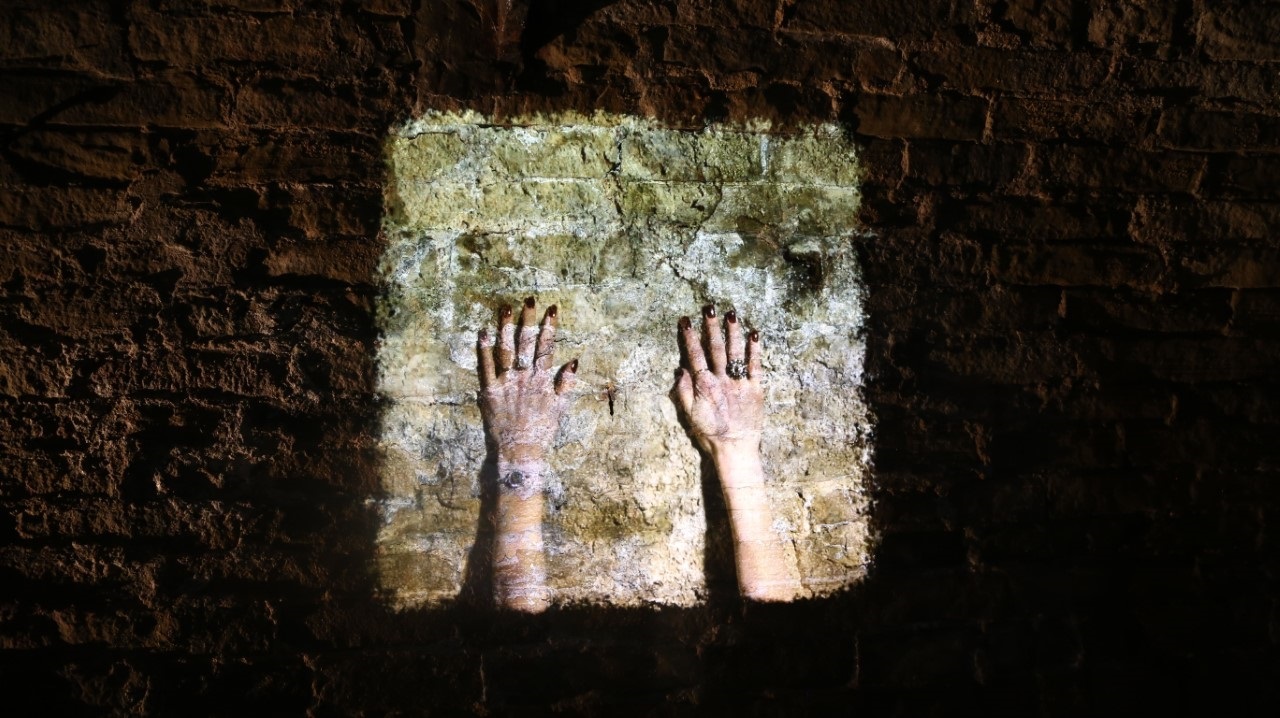
How much of the content has changed since 2016? Maybe you have made some new discoveries or some new artistic work?
Loads and new loads of it have changed. It’s changed much more than I ever expected it to. Some of it was because of the restraints of the building. When I did it before, I did it in an old theatre, so a lot of things were based on things hanging because there was a grid everywhere. Here, the owners said we could do anything to the building but couldn’t hang anything from the ceiling.
Can you tell us more about the genesis of the show?
The show initially consisted of three central pieces. It all started with my mom, as my father had already passed away. Both my parents always used to talk about their time in the shelter, in the box. The box was the family story.
About 12 years ago, I stopped doing theatre and did a drawing degree. I had to do a project, and I asked my mom, “Why don’t we draw the box together?” Because she’d always told me stories of it. When I was a kid, I imagined it as a toy box, but when I got older, I went to the Anne Frank House and saw this apartment. I thought, “Oh, this is what a hiding place looks like.” Much later, I talked to my mom a bit more and realised that it was actually closer to my first imaginings, so I said, “Why don’t we draw the box so we can visualise it?” We started to do that, and I couldn’t draw very well. She’d look at these drawings and go, “Oh, I didn’t know.”
At that point, I started to make little models and bring them to her. She’d say, “Oh, it’s a bit bigger, and the bed was here,” and so we did that. Then I built a mockup, and she walked in and said, “The door’s on the wrong side.” So, I made a replica of the box for my college project. She came to the final show and said, “It’s great, but still a little bit too big.” I guess I was always trying to make it bigger because I couldn’t believe it was really that small.
The local museum wanted to exhibit that summer, but it wouldn’t go through the door. I took another 6 inches off it. Mother came to see it and said, “Now it’s a perfect size.”
Two years later, my mother died. I wanted to continue working with the piece, as I’d never really got to grips. I’d got the box size, but I didn’t really understand where it was in the building and how it worked. I went back and looked through all my father’s papers to see if there were any more descriptions, and I found his description of it, and in his version, it was slightly different. I thought that was really interesting, and then I built his version.
So in the show, there’s his version, her version, and my memory of the toy box version. That was what the show was built around there. This and the idea of memory not being something fixed was the first foundation. The three hiding places are slightly different in Kaunas, but they’re still there.
Then the second linchpin was the Big Action. I was born on the 28th of October, so this was always a big thing for my mom. I always wanted to do work about Big Action. It was always about being sent to the left or the right and about getting people to feel in a very visceral way how delicate that moment is and how easy it is for it to go in either direction.
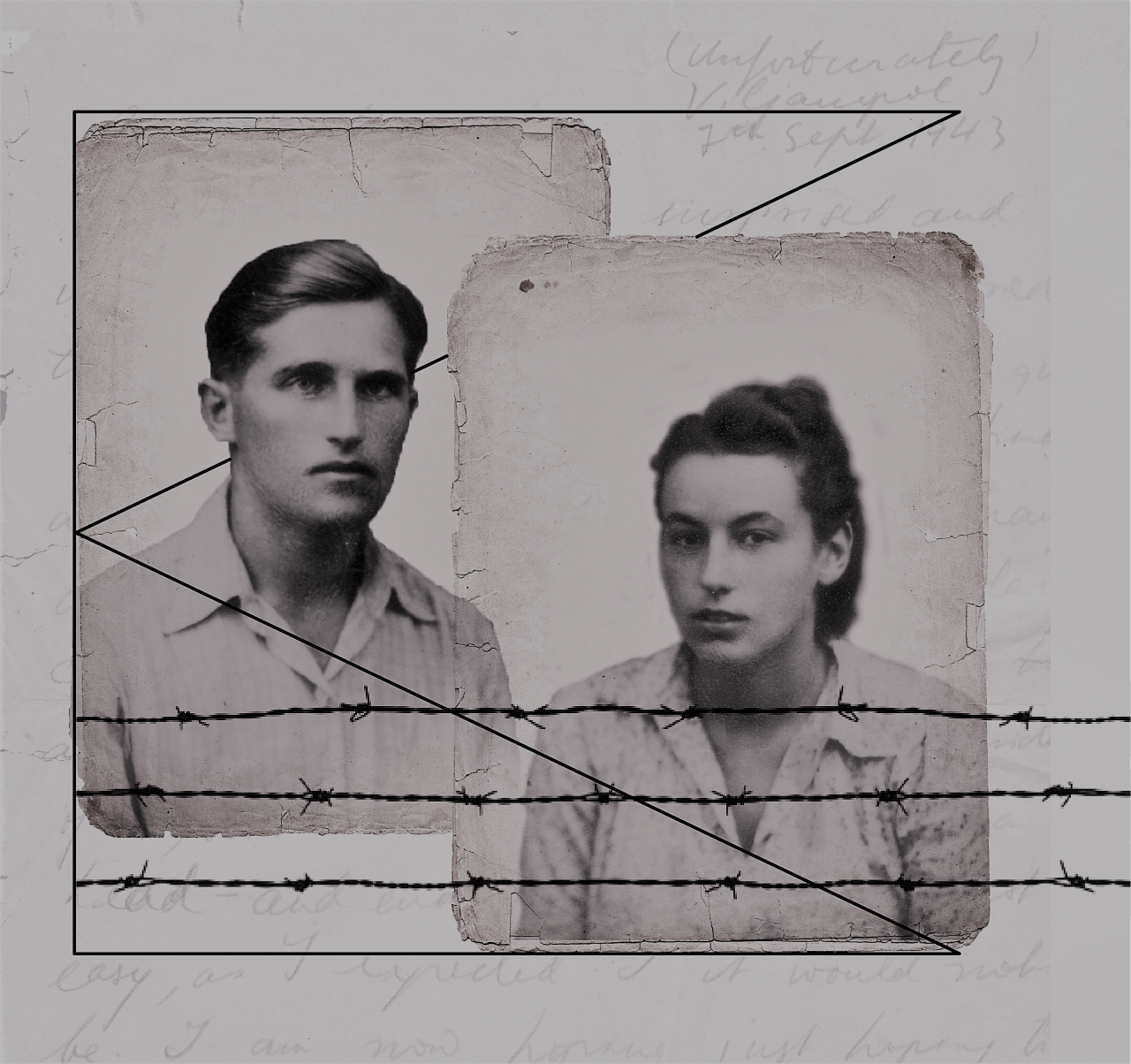
I built this maze which had three stations. There’s a Jewish game, dreidel. There were dreidels that you spun, and you would go either to one side or the other through this maze of barbed wire. That piece would not work in Kaunas. I spent a long time trying to squeeze it in, and then I realised I just had to change it. It’s turned into a games room, but it’s the same idea. It’s about that feeling of chance and that it could go either way at any time.
The third piece, central to the show, is the starscape of barbed wire, which is very beautiful. I wanted something uplifting because it’s a hard story to tell. Ultimately, my parents survived, and ultimately, it’s a love story. In the Kaunas version, the starscape of barbed wire is still there, but finding a space for it was really tricky. It’s smaller, and I hope it will be extraordinary.
It was very important for me to have something that people could enjoy. I know it sounds crazy, but all the way through, I think that if you’re going to ask people to listen to this story, you need to give them a way to enjoy the experience. It’s important to me to talk to young people and for them to engage with it. So the games room felt like an excellent idea.
I am thinking about the legacy of Anne Frank. Recently an animated film by Israeli director Ari Folman came out, which features Anne’s imaginary friend, and I believe this is the right way to connect to younger audiences. The youngest ones, which is crucial.
Yes. The thing I implemented this time that I didn’t do last time is talking about the Lietūkis massacre because my grandfather was killed there. It doesn’t mean anything in England, but here I’ve been struck by how few people know about it. I met a bunch of people working on the show, who are all educated, interested people in their 30s and 40s, all living in Kaunas, and none of the three had heard about it.
Telling that story is really hard and really important. A lot of my thinking has been around how to do that. My grandfather owned a cinema called Pasaka, and we reconstructed its neon sign for the show. When I realised ‘Pasaka’ means’ fairytale’, I was like, “What a gift!”
Have you been inside the cinema, which today is a gentlemen’s club?
No. I go past it. I have a new piece at the end, which uses photographs. When I was a kid, my mom had a photo album with family photos, and on the back page were two photographs of Lietūkis. A German paper newspaper in the ’50s published photographs, and she got copies and put them in a family photo album.
Of course, the other big new thing is that I’m working in two languages. Anything that’s a challenge produces something interesting. There’s also more sound, as we now recorded pieces in both languages. There used to be too much to read in the first show, and there’s still a lot! There are many books in the show that you open, and the rule is you should be able to read it all in 30 seconds because I think that’s people’s attention span. It’s just about giving people enough context so that the pieces make sense. Some people will spend hours reading every word, and then others won’t read any of it. That’s fine. It’s designed to work for however you engage with it.
Isn’t that where your years of experience in theatre production come in?
I would say it’s like a theatre without any actors. I don’t know how a Lithuanian audience will react. In England, first, we had all these suitcases you can open, and the first audiences didn’t touch them. In the end, I wrote on them, “Open me.” Then people went for it. It’s about finding out how much I must tell people to do so; there are drawers to open and telephones to pick up. Will people pick up the phone if it rings? Will they open every drawer? That’s a voyage of discovery, and I’m sure I will keep changing things. Also, I’m going to work quite closely with that team. Hopefully, they’ll be able to encourage people to interact.
When you first started sketching the box with your mother, could you imagine that in 12 years or so, you would be opening an exhibition in her hometown? What were her feelings about Lithuania? Did she come here after the war?
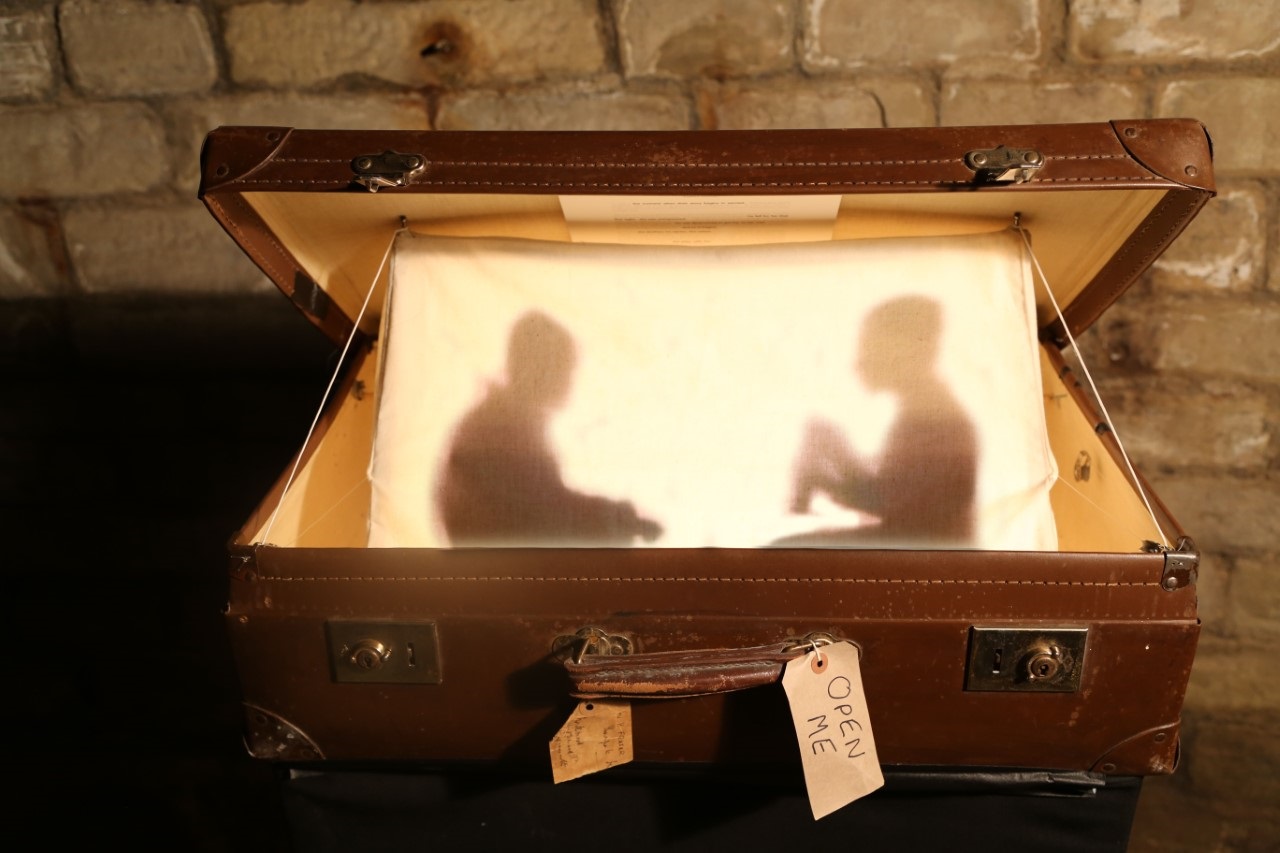
My mom came regularly. I came with her. She shared an outlook on life that one can’t judge. One can only judge people who commit acts, not anyone around them, and it’s people, not nationalities. One of the many stories she told me and wrote down was about going to the European basketball final in 1939, for which the sports hall was built. When Lithuania beat Latvia, she writes about how horrified she was that the Lithuanian audience was booing the Latvian players. It’s so her. She was 16. That’s the golden diary entry for the first entry. It tells her position really clearly. There’s another story about after they come out of the ghetto and the Germans were retreating. She was walking down the road with a friend, and a German soldier was sitting. They walked past him, and her friend was smoking. The German said to her friend, “Have you got a cigarette, mate?” Her friend looked at him like the soldier was the dirt on the bottom of his shoe. She was horrified, her entire family had been killed by the Germans, but, she said, this was one man, and all he wanted was a cigarette. That was very much her outlook. That man hadn’t done anything necessarily.
Do you share the same outlook?
I think it’s the only way to go forward.
Have you ever thought about what would have happened if your parents had stayed in Lithuania?
I never have.
I think even your name would be different.
Actually, I’m named after my grandmother Eugenia, so Jenny is an abbreviation of Eugenia. It first became Jenia, and then it became Jenny. I think it would’ve been different because my parents would’ve been very different. My father was extraordinarily successful in England, and I think he probably would’ve been successful wherever he was. Maybe he’d have been accepted more here, in Lithuania. He was always the jumped-up Jewish emigrant in England who got above his station.
He wanted to be accepted into the high echelons of British society and eventually became a Lord. You’d think that was it, but he recognised it was his great sadness that no matter how much he achieved, he was never quite going to be part of that elite that he hankered after being part of.
My mom, she had never been to England. My father was already living there before the war, and his family were in England. After the war, he wanted to go back to England. Her only surviving relative was her little brother Aleksander Shtromas, who was in Lithuania. She needed to stay here. The thing that tipped her into going was that, once she found out about Lietūkis. How to live in a city, where anyone walking past on the street might have killed your father? That’s what encouraged her to leave.
Kaunas 2022 team surprised MEPs: we have never seen this before

Kaunas – the 2022 European Capital of Culture attracts more and more attention and international visits. On July 18-20th the city received important guests – a delegation from the Committee on Culture and Education (CULT) of the European Parliament. They met with the representatives of the Ministry of Culture, Kaunas City Municipality and organizers of the Kaunas 2022 programme.
A delegation of six MEPs visited Kaunas for three days - they not only participated in the various meetings but also visited a considerable part of the ongoing events and exhibitions. According to S. Verheyen, the chairwoman of the CULT, the most important questions were the legacy of the programme and what awaits the city when the year of the Capital of Culture ends.
“Our goal was not so much to verify the facts, we wanted to see the long-term perspectives. It was clear that while hosting world-famous artists, Kaunas dedicated a lot of attention to the issues of city identity, community building, and inclusion of young artists. It is great to see how local communities, private and public sectors are joining the project. It is very important that local people are involved in the programme, so that the culture develops from the community itself, brings joy, and encourages people to participate,” said S. Verheyen.
In her speech, A. Verneyen emphasized multiple events and initiatives taking place in Kaunas and Kaunas district, the unique dredger boat “Nemuno7”, the modernist architecture of the city, and the involvement of former and current European Capitals of Culture in the programme.
The members of the delegation were also impressed that the city is not afraid to tell stories that often do not reach the public. “Untold stories, painful twists of the city's history must also be heard,” said N. Kizilyürek.
It is not the first year for Kaunas city and region to host these events - the programme has been developed together with local communities for five years. Kaunas region is holding events for the “Contemporary neighborhoods”, and the suburbs are enjoying festivals and the internationally acknowledged project “Culture to the Courtyards”. The Kaunas 2022 programme also aims to revive and turn various objects and spaces into new places of cultural attraction – the public art route “Emerald road” was opened in the Kaunas district, and the dredger boat “Nemuno 7” was turned into an exhibition space. In the former central palace of Kaunas Post Office, there is a space dedicated to Ukrainian artists and creatives named “CulturEUkraine”. Meetings, exhibitions, and other activities are organized at this center of open cooperation.
The attention of MEPs was also attracted by Mythical Beast of Kaunas
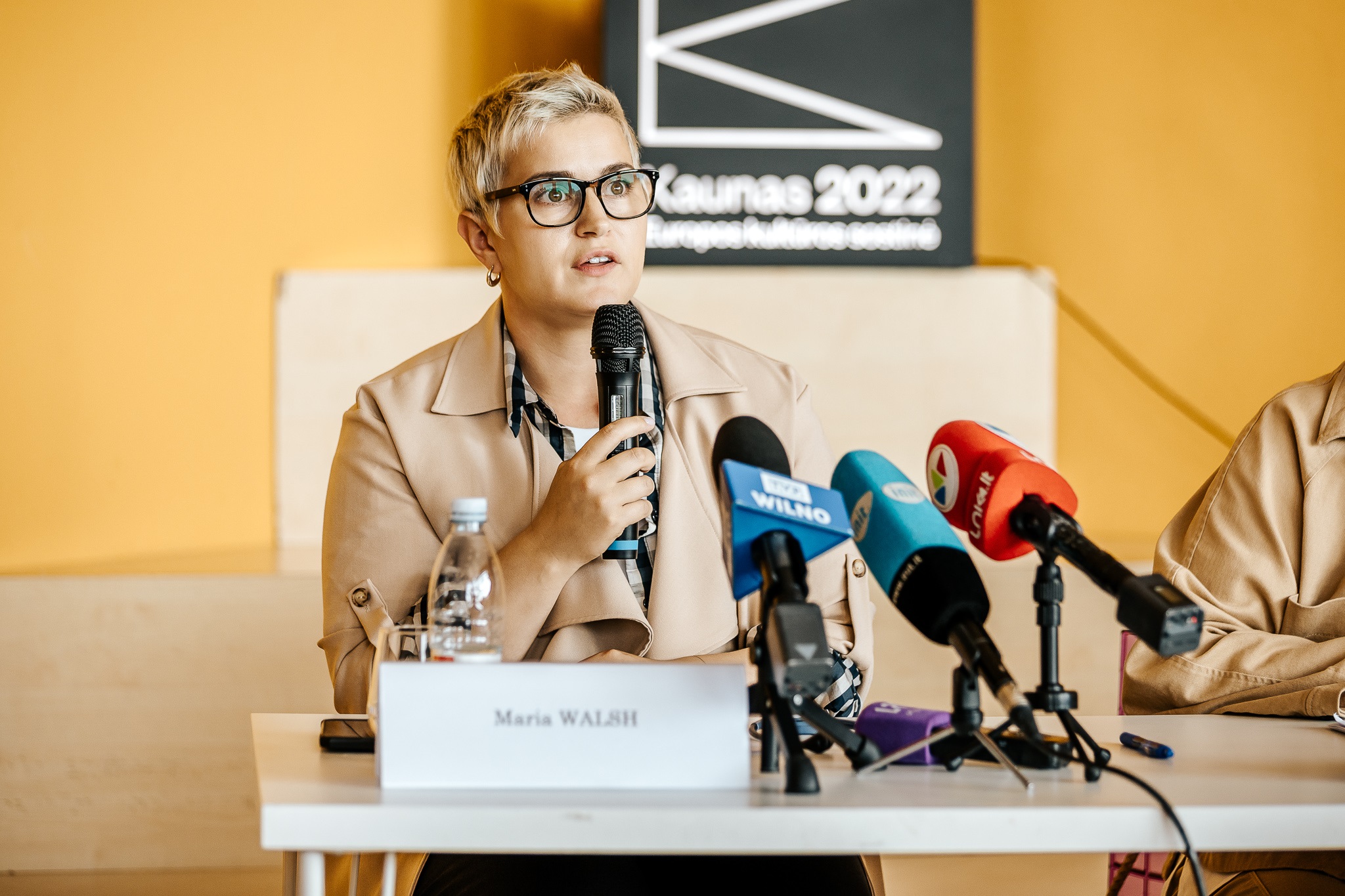
MEPs were very impressed by the Mythical Beast of Kaunas. Created by the community itself and becoming a myth and mascot of the city, the Mythical Beast of Kaunas is inseparable from the Kaunas 2022 programme. It also unites the three main events of the Capital of Culture – the “Confusion”, which opened the programme, the “Confluence” that flooded the city at the end of spring, and the “Contract” that will take place in the autumn. In the city, you can also see the sculpture of the Mythical Beast, the design of which was created by Darius Petreikis, the tooth of a mythical creature made by ceramicist prof. Remigijus Sederevičius, and in the entrances of Kaunas Castle you can hear the snoring of the Beast.
“We have never seen the myth associated with the European Capital of Culture. I think it's a great way to involve both children and adults,” Ms Verheyen said. “It is also very interesting that in many years' time people will remember this myth as their own, perhaps without even knowing that it was created in the year of the European Capital of Culture.”
The events will continue beyond the end of the European Year of Culture in Kaunas
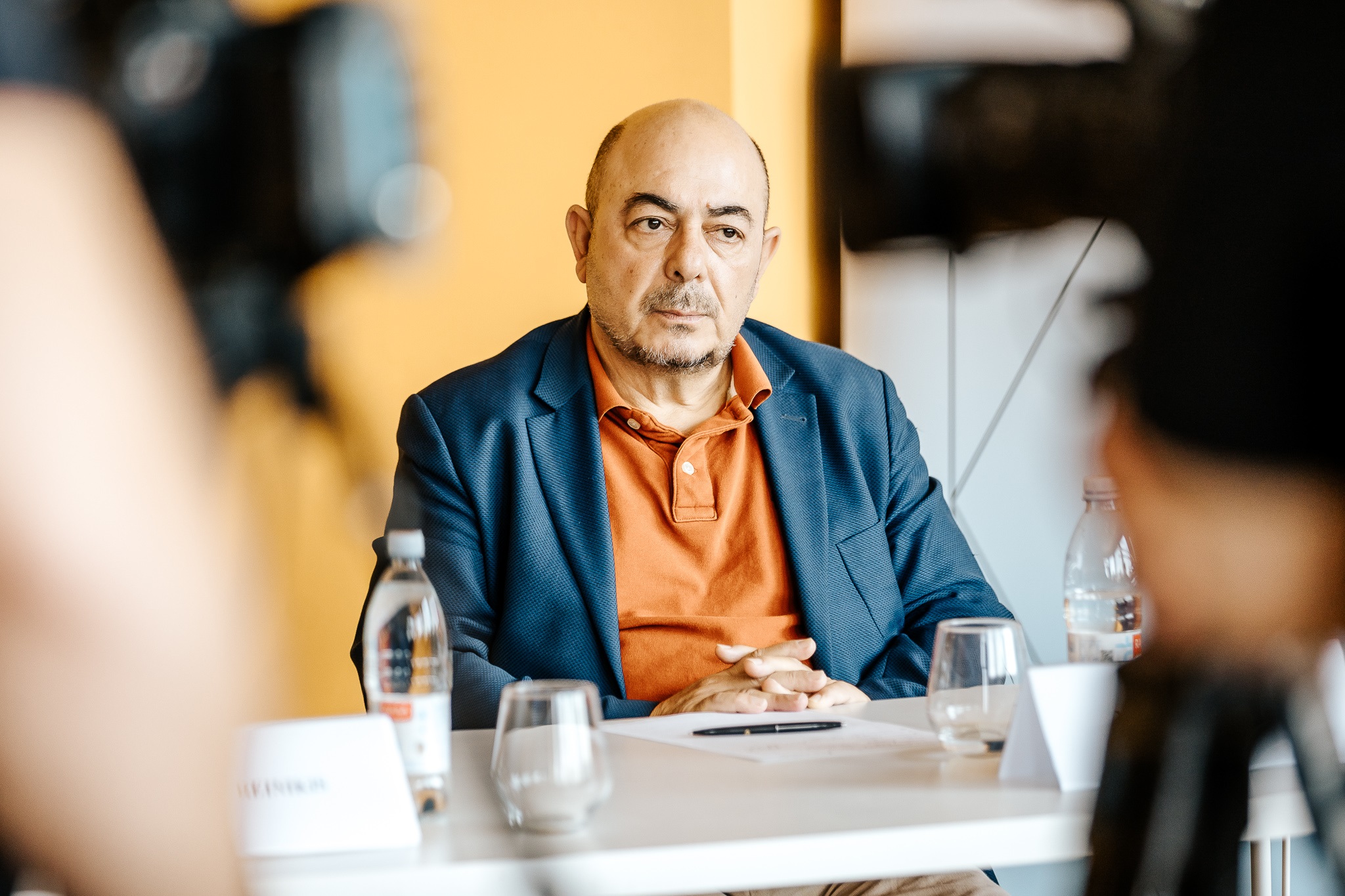
According to Mindaugas Reinikis, Head of Marketing and Communication at Kaunas 2022, Kaunas has grown into a contemporary capital of culture, therefore, even after the end of the year of the Capital of Culture, residents will continue to enjoy an active cultural life. Among the events planned for the future are the “Day of Happiness”, the festival “Audra”, the European Capital of Culture Forum, the community programme “Fluxus Labs!”, “Nemuno7” and other initiatives and events.
By the end of the year, Kaunas 2022 will invite you to multiple events and exhibitions. For the remaining months, Kaunas residents and guests of the city will be delighted by the international festival of performing arts “ConTempo”, “CityTelling Festival”, landscape design festival “Magenta”, “Fluxus festival”, Yoko Ono's retrospective “The Learning Garden of Freedom”, and a conclusion of these events by the last part of the trilogy the "Contract".
The delegation of the EP's Committee on Culture and Education consisted of Chairwoman S. Verheyen (European People's Party, Germany) and MEPs Niyazi Kizilyürek ("Left", Cyprus), Marcos Ros Sempere (Socialists and Democrats, Spain), Tomasz Frankowski (European People's Party, Poland), Maria Walsh (European People's Party, Ireland) and Irena Joveva ("Renew Europe", Slovenia).
Photos by Gražvydas Jovaiša
July in Kaunas: Weekly festivals and cultural immersion
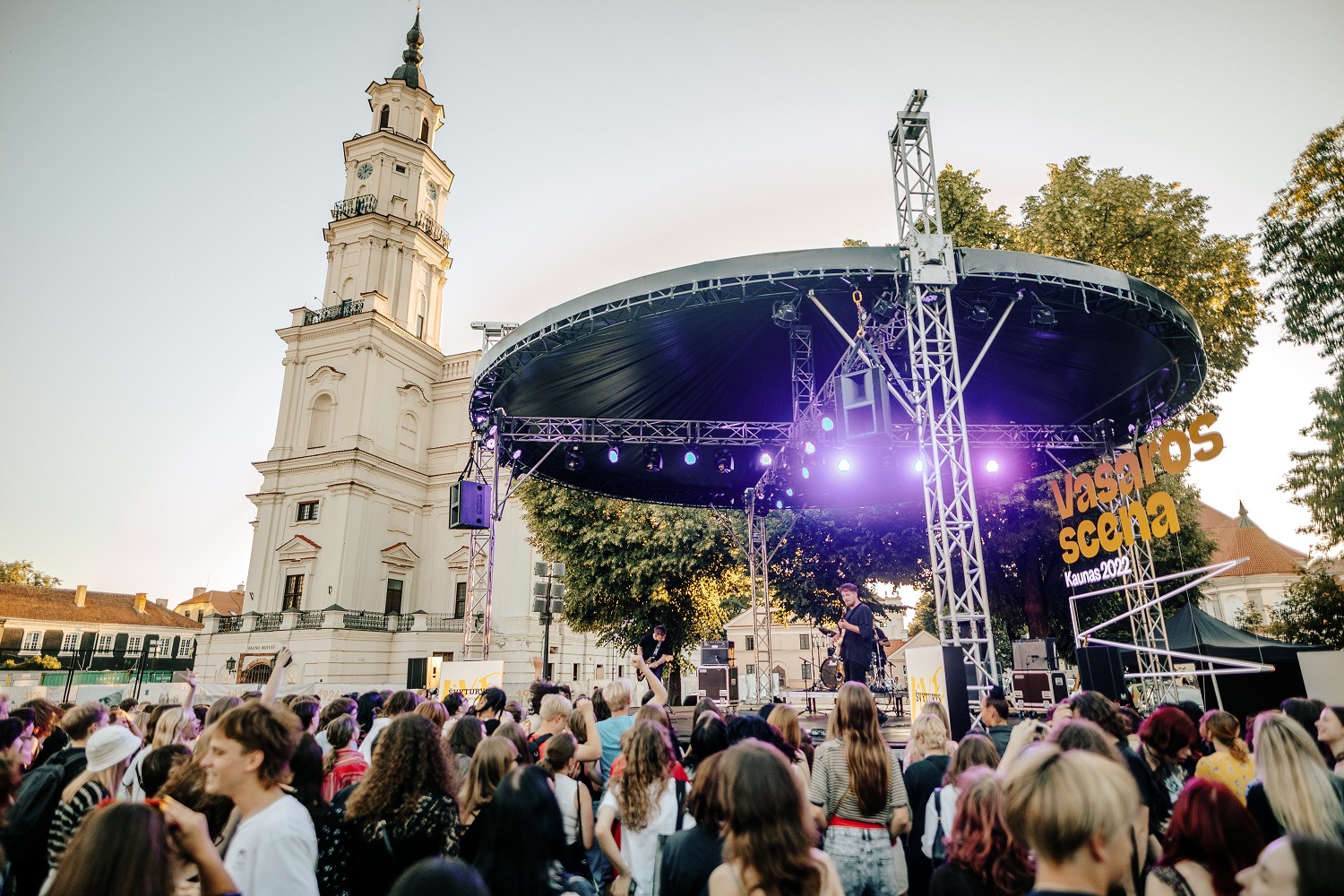
Halfway through its year as the European Capital of Culture, Kaunas show no signs of slowing down as July becomes jam-packed with incredible festivals, breath-taking exhibitions, and live performances. Initiatives and events have been organised by local communities and cultural centres showcasing the very best of Kaunasian culture throughout the city.
Visitors are invited to speak with artists and historians at the city telling festival, where the city focuses on forgotten tales of its past. Nature lovers can meet with likeminded people at ‘A Forest for the senses’ Those interested in auditory experiences do not want to miss out on Kaunas this July. The city is hosting its 5th annual Piano Fest with international artists, free concerts every day and music masterclasses. There’s something for everyone this July in Kaunas, read below to discover more.
Exhibition Marilla Destot's "Journey"
The exhibition "The Journey" by the French artist Marilia Destot explores themes of memory and its poetic nature and fragility. The exhibition presents recent artistic projects that utilise a variety of techniques. Destot explores the historical roots of her family in Lithuania and their Jewish heritage by recreating memories activated by imagination.
When: July 14 - 28 August
Where: LSMU Emanuel Levin Centre
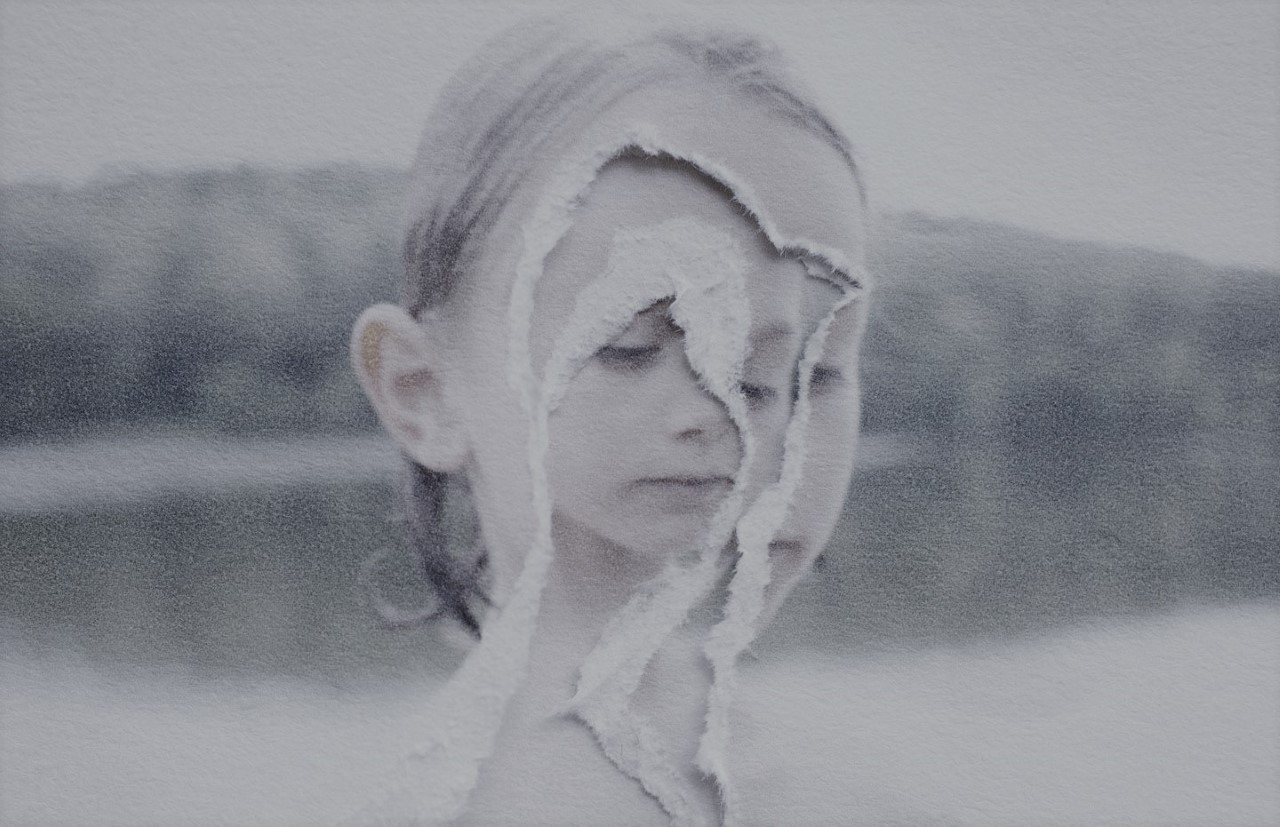
City Telling Festival - Public Installation “Slenkstis”
First launched in 2019, City Telling Festival brings together artists, museum and theatre professionals, librarians, and both amateur and professional history enthusiasts. During the project, residents and businesses in the city centre are invited to "accept" a mezuzah created by artist Jyll Bradley, an element of Jewish heritage. A metaphor for individual personal light, anyone who has accepted a mezuzah can contribute. Bradleys art is a stylised object of glass and wood, in which the visual identity of the mezuzah is preserved instead of the traditional roll. With that, the artist seeks to bring the symbol of the mezuzah back to the streets of Kaunas, where many Jews once lived.
When: July 17
Partners: Kaunas Jewish Community
Marina Abramović's Exhibition "Memory of Being"
One of the most highly anticipated art events in all of Lithuania is the exhibition "Memory of Being" by Marina Abramović. Presented exclusively for the first time in the city of Kaunas, Abramović is one of the most famous performance artists in the world. The exhibition offers a detailed presentation of artworks by Abramović from the 1960s to today. The collection also draws attention in a unique form – for the first time, it is prepared as an impressive video installation from selected documentaries and films of the artist's performances.
When: Closing July 30th
Where: Kaunas Picture Gallery
Organiser: Art Park Gallery "Meno parkas"
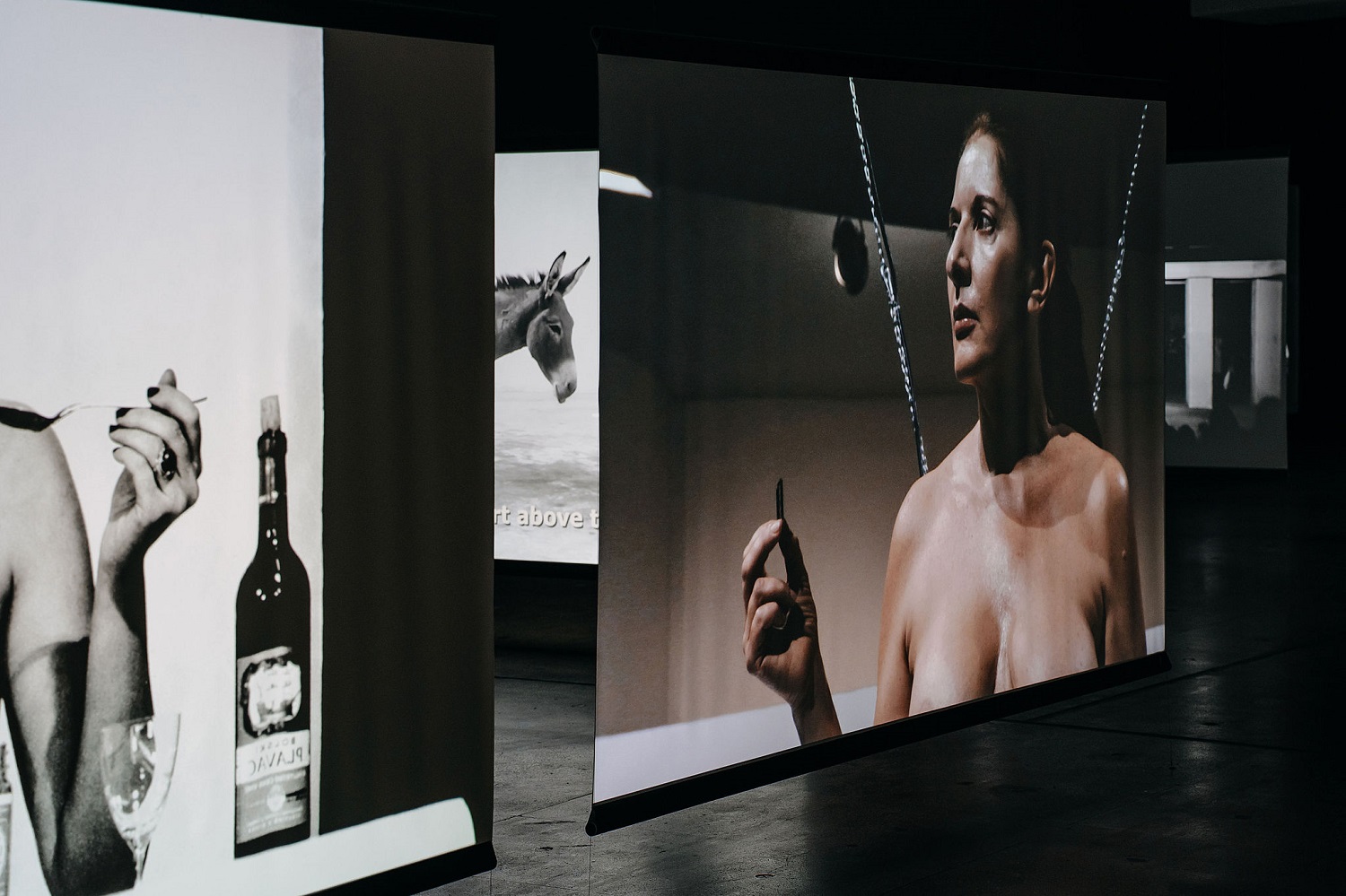
The Great Ship of Culture: "Nemuno7"
"Nemuno7" is a unique river art and landscape design project in Europe that will serve as a public cultural space. The project combines the history of technology, heritage and contemporary architecture for local residents, and it will become a new place of attraction in Kaunas district. This year the ship is a space for the exhibition "Fluid bodies" and the permanent exhibition "To thrive and to flourish".
When: II - V 16:00 - 20:00 VI - VII 12:00 - 20:00
Where: Left bank of the River Nemunas in Zapyškis, Kaunas District
Organisers: VšĮ "Ars Futuri"
Tickets: here
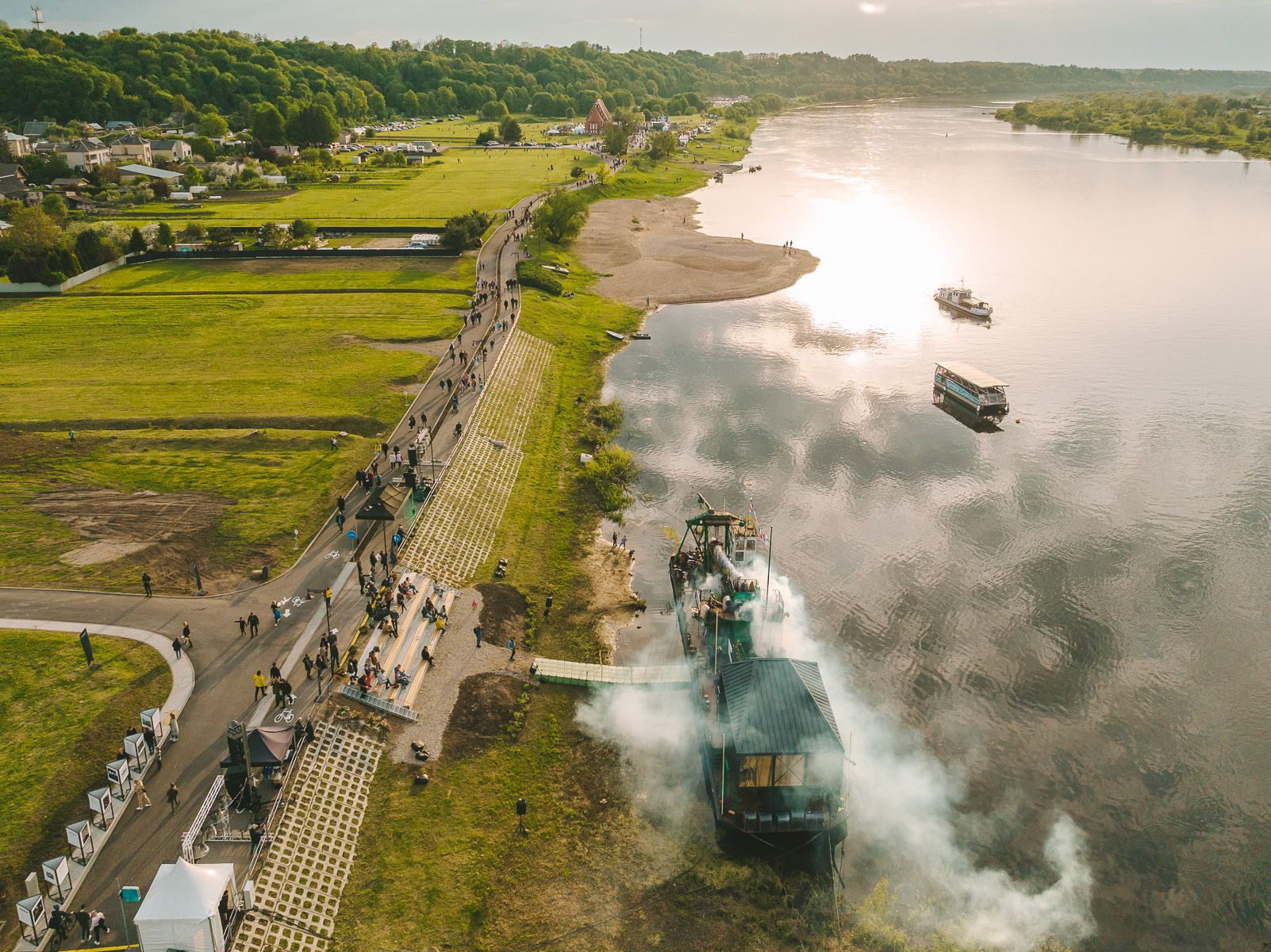
Kaunas 2022 Summer stage
Throughout the Summer season, the heart of Kaunas Old Town – the Town Hall Square – will beat with the rhythm of culture. Residents and guests of Kaunas will be delighted by the most memorable musical performances, literature readings and food tastings presented on the Summer stage of “Kaunas 2022”.From May to September, you may enjoy weekends of a carefully prepared artistic program and hundreds of free events showcasing the best Lithuanian and foreign music performers This month on Summer stage expect: Monsieur Doumani (CY), Theodore (GR), THE ROOP (LT), Elektro Guzzi (AT), Jurga Šeduikytė (LT).
When: All Summer
Where: Kaunas Town Hall Square
Organiser: "Kaunas 2022"
Events are free
Further Information could be found here.
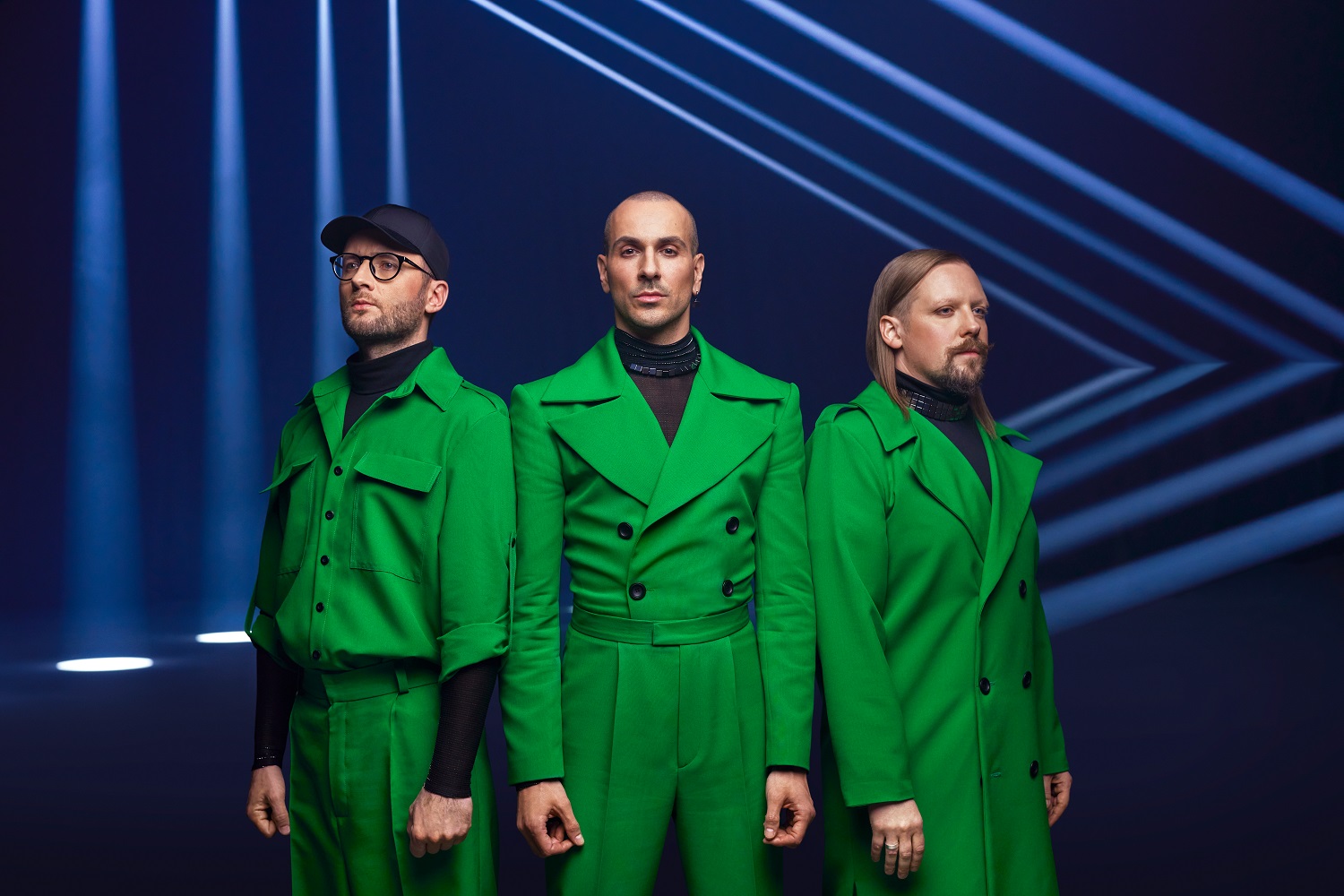
Exhibition "Kaunas – Vilnius: Moving Mountains"
Kaunas and Vilnius, Vilnius and Kaunas. The largest cities in Lithuania. Competing, disagreeing, but also in need of each other. The pride and superstitions that have filled the life of Vilnius and Kaunas hide the truth – indeed, these cities need each other. This is told by the exhibition "Kaunas–Vilnius: Moving Mountains" taking place at the MO Museum in Vilnius and Kaunas City Museum at the same time. Would you like to see the entire exhibition? Then get ready to visit both cities!
When: 23 April – 28 August
Where: Temporary M. K. Čiurlionis Gallery in Kaunas, MO Museum in Vilnius
Organiser: Kaunas City Museum, MO Museum
Further Information could be found here.
Exhibition "1972: Breaking through the Wall"
We are sure that this exhibition will touch every visitor. Kaunas will open its heart like never before. The exhibition "1972: Breaking the Wall" will take the viewer to the communities of people who disobeyed and resisted the system of the 1960s and 1970s: youth rock bands, actors of drama and pantomime from Kaunas, rebellious hippies, modern artists of Kaunas and Vilnius. Paintings, photographs and films, documentary testimonies of musical life, youth fashion of this period and other artefacts tell about alternative culture and non-Soviet way of life in Soviet Lithuania.
When: Closing August 31st
Where: Kaunas Central Post Office
Organiser: "Kaunas 2022"
Tickets: on site
Further Information could be found here.
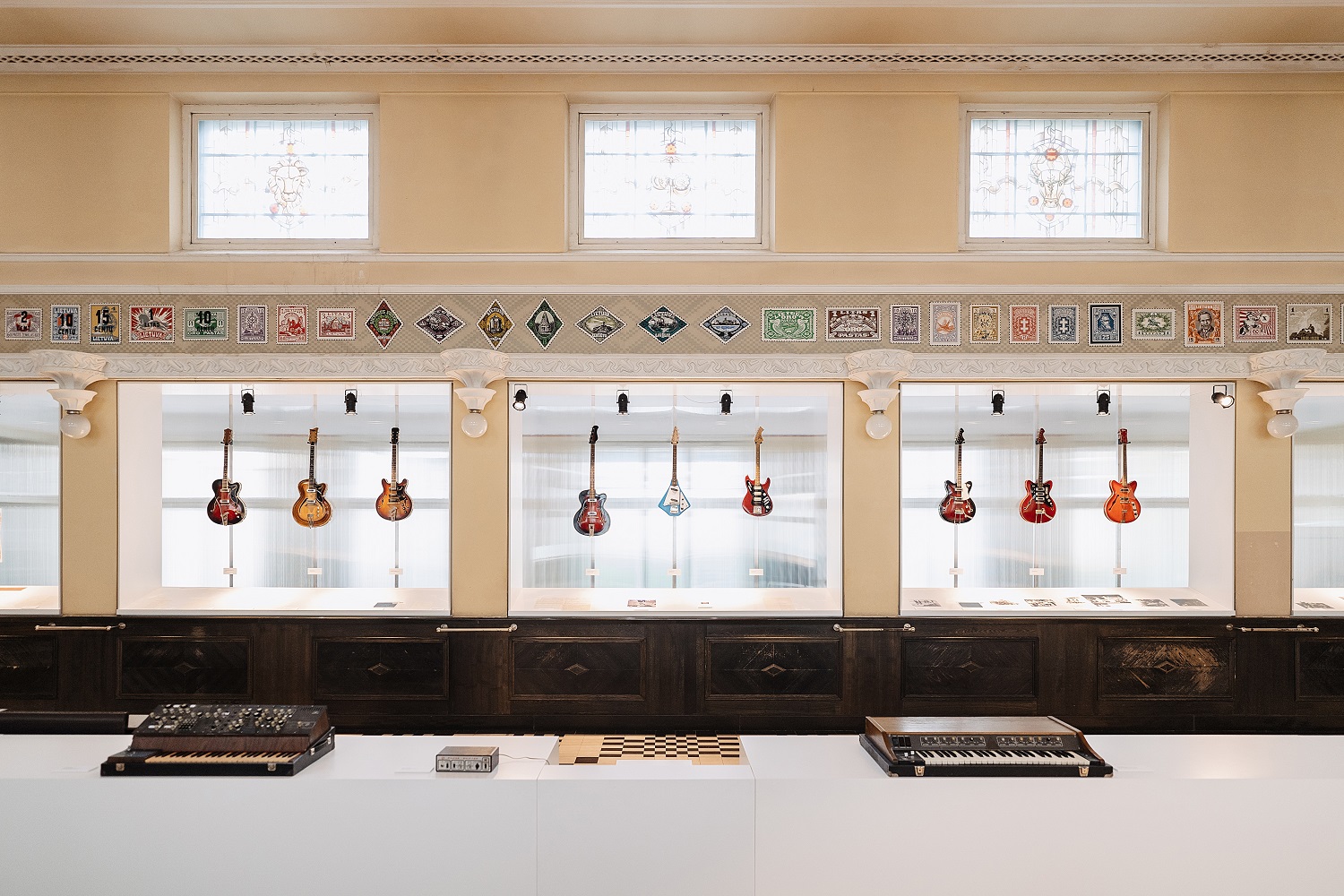
As Summer heats up be sure to always carry sunscreen and the Kaunas 2022 app on your phone. That way, you will always keep up to date with the remaining whirlpool of cultural events. Audra Festival, the recent 5-day spectracal shattered stereotypes and demonstrated a modern contemporary city. Get closer to brilliant artists and watch out for more fantastic exhibitions such as: Čiurlionis National Museum of Art hosts "That Which We Do Not Remember" exhibition by William Kentridge, and Yoko Ono's installation "Ex It" at the Bank of Lithuania. As every year, a variety of performers will gather at the Pažaislis Music Festival: from jazz to opera, from a quartet to a symphony orchestra. The European Capital of Culture continues to strive forwards in its pledge, bringing art and culture together.
Basque pop, Alaskan acapella, Contemporary Circus and a Rap Orchestra on the Kaunas 2022 Summer Stage in July
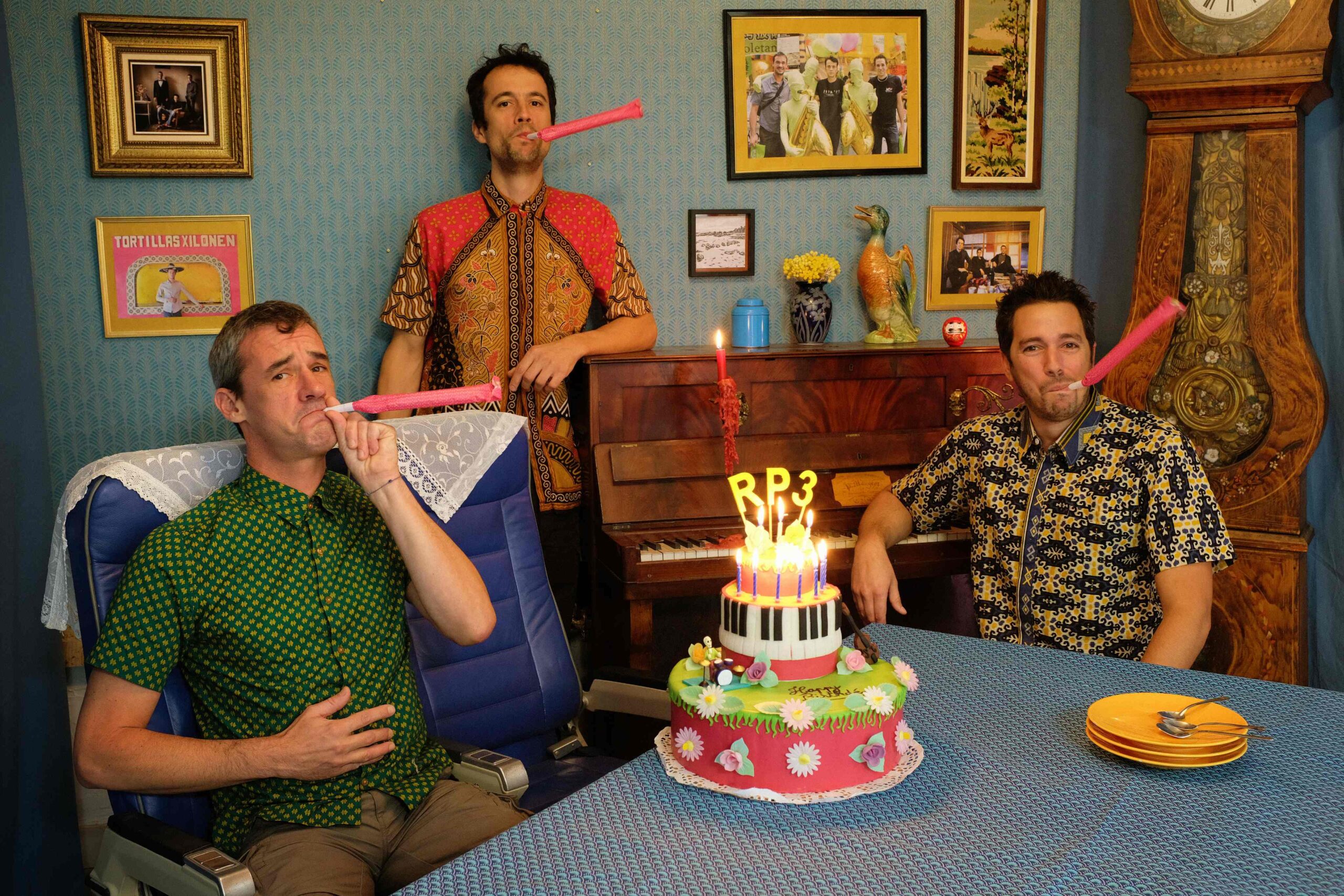
Kaunas, Lithuania has already got used to the cultural and not at all boring routine of this season - Thursday to Sunday evenings are spent in the Town Hall Square. The Kaunas 2022 Summer Stage will run here until autumn, hosting concerts by the most interesting Lithuanian artists and the most exotic bands from all over the world, as well as performing arts, talks and other activities. July will kick off with the Audra Festival weekend in the heart of Kaunas Old Town and end with melodic bedroom pop from the Basque Country.
The Old Town to be Taken by Storm
The first contemporary city festival Audra, which will take place at the turn of June and July, will visit some of the most unexpected spaces in Kaunas - from the historic taxi park and metal factory to galleries, cafés and even the Oak Grove. Of course, the festival, dedicated to Kaunas 2022’s youth programme “Emerging Kaunas”, will not bypass the Old Town either. On 1-3 July, the Kaunas 2022 Summer Stage will host an exclusive Audra programme. On Friday, young musicians Saulės Dievas, P404, Nouvelle and Stotis will be the first to unleash the thunder of rock, grunge and alt-pop genres in the Town Hall Square. A Serbian play will be performed on Saturday, followed by a discussion. On Sunday, 3 July, esports will take over the stage, with a daytime programme by the Iron Wolves team and the innovative entertainment, new media and community network Trys Kubai.
From Cyprus to France
The second weekend of July at the Kaunas 2022 Summer Stage is symbolically dedicated to musical journeys. Thanks to the European Commission’s EMEE project, which brings together the continent’s music export offices, a band from Cyprus, Monsieur Domani, will visit the city on 7 July. As The Guardian reported, they are one of the most entertaining, confident and inventive groups in the scene. The trio, which has performed worldwide, takes inspiration from contemporary Cyprus but also draws on the musical traditions of their island.
Also at the invitation of EMEE, the Greek singer Theodore, who started his musical career in London, will perform in Kaunas on 9 July. Classical and electronic keyboards, ambient and minimal moods, waves of drums and guitars - Theodore adds his haunting vocal to the experience.
From different parts of the globe, rising piano talents will flock to Kaunas Piano Fest in July, bringing classical masterpieces to life with a fresh sound. The festival will open on 8 July with the world premiere
of a unique arrangement of George Gershwin’s Rhapsody in Blue, performed by Monika Mašanauskaitė, Robertas Lozinskis, Žilvinas Brazauskas and Peter Fleckenstein.
On 10 July, the French Rémi Panossian Trio will wrap up the Kaunas 2022 Summer Stage weekend. The trio have just released an album called “Happy Birthdé!” on the occasion of their 12th birthday. This humorous trio are emblems of French jazz abroad, spreading their energy and chilled groves around the globe from Uruguay to Tokyo.
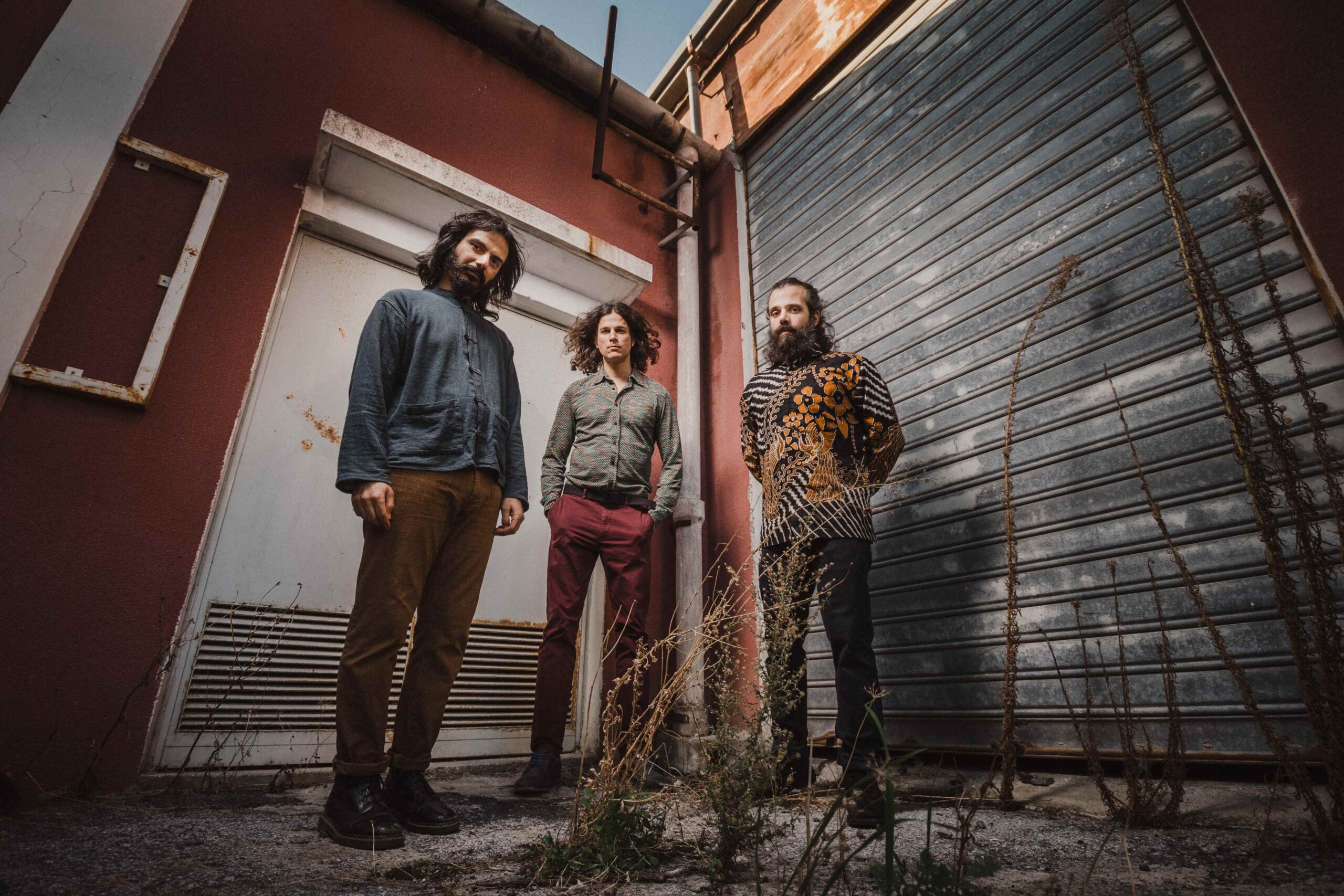
Contemporary Circus and Eurovision Participants
If you associate Europe's biggest song contest with the Ukrainian hit “Stefania”, it's time to rewind the timeline and remember the moves you used to know well. Kaunas 2022 ambassadors THE ROOP will undoubtedly be performing both of their Eurovision highlights, On Fire and Discoteque, at the concert on Thursday, 14 July. The band’s night in Kaunas will also be a great chance to hear what they are contemplating today.
An international troupe from Lithuania - that’s how you can introduce Kanta Company, contemporary circus professionals. Their performance “Clothes and Us” opened last year’s Cirkuliacija Festival and now the group is preparing a special programme to catch the attention of the little ones in Kaunas Old Town on 16th of July. The show will feature a Chinese pole, aerial silks, clowning and juggling!
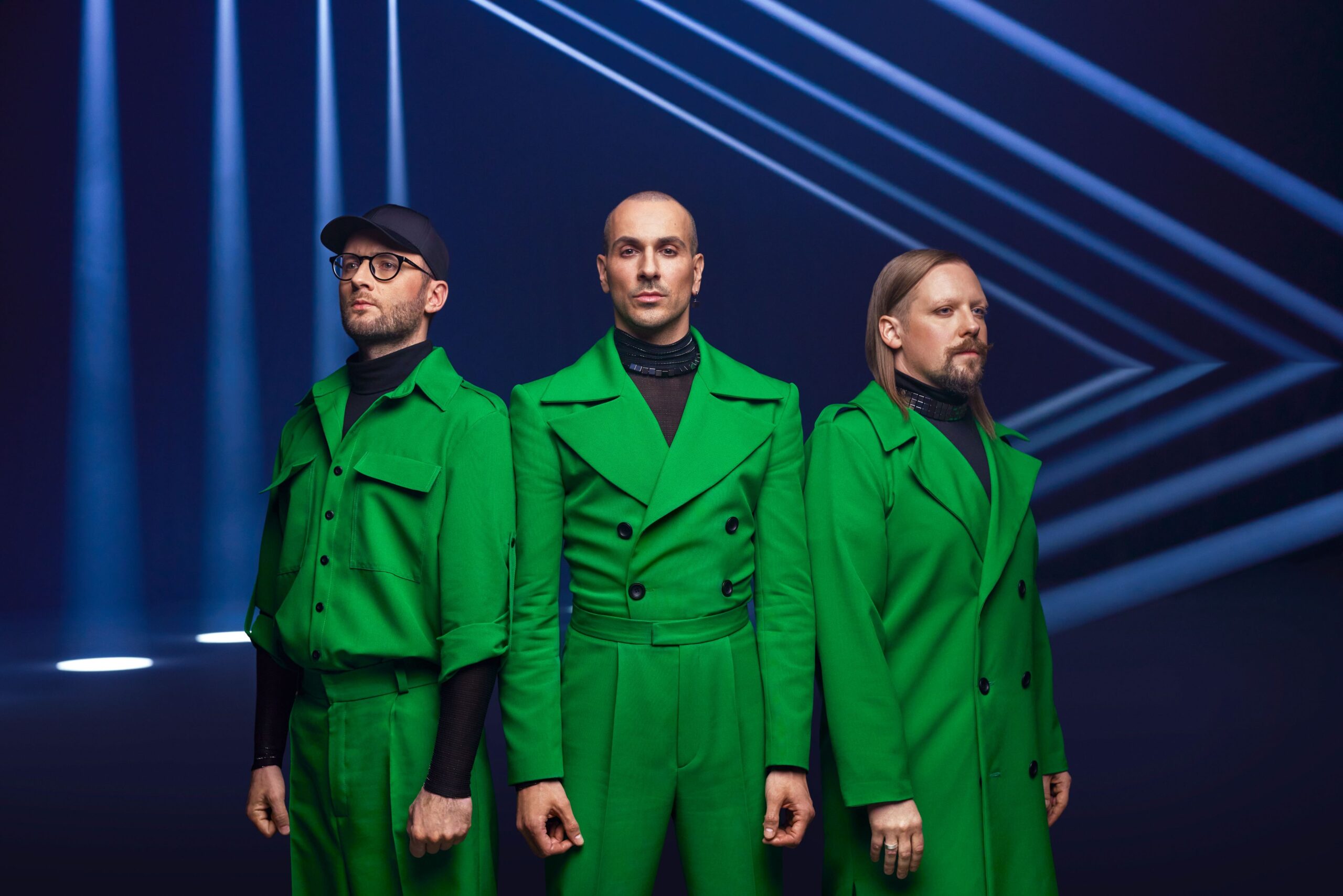
Techno, rap or Rock?
You don’t have to choose one, as all three genres will be live on the Kaunas 2022 Summer Stage in one weekend in July. On 21 July, the European Capital of Culture will welcome Elektro Guzzi from Austria, playing analogue techno music on guitar, bass and drums. The Viennese are convinced that playing techno is not a crime.
The most colourful Lithuanian hip-hop collective Despotin’ Fam, whose members bring musical influences from Australia and Berlin, will be changing the techno mood into rap rhythms. “The group that cemented the leaders of the scene” is one of the apt descriptions of the collective that has been playing for two decades and is often presented as a rap orchestra. “Despotin’ Fam” will arrive in Kaunas on 22 July.
On 23 July, guitars will take over again on the Kaunas 2022 Summer Stage. Hailing from Šiauliai, the city called Lithuanian Manchester, Colours of Bubbles always presents rock in a modern and unboring way - their music is not only heard on the theatre stage but also with an orchestra. What’s in store in Kaunas? First of all, the fans that have missed them!
More International Highlights as August Approaches
What does an acapella sound like in Alaska? What can beatboxing teach you? The answers to these questions might be heard on the summer stage on 28 July, when two bands from across the Atlantic visit Kaunas at the invitation of the US Embassy in Lithuania. The Pipeline Vocal Band, a female trio from the state of Alaska, is a group that puts a unique twist on well-known favourites from all eras, whether it’s crossing decades or genres. And Freedom’s Boombox is a group of globe-trotting performers who have travelled to every continent (except Antarctica), teaching along the way, touring with the Backstreet Boys, and developing a widespread following.
On Friday, 29 July, another European Capital of Culture project ambassador, Jurga Šeduikytė, will climb to the Kaunas 2022 summer stage. This summer, the Lithuanian singer is travelling around Lithuania, visiting her fans in various locations, and even singing in Ukrainian - also, this season marks the 17th anniversary of her cult song “Don’t be afraid”.
The Basque project Oki Moki is the last guest of the second and penultimate month of summer in Kaunas. Lo-fi pop, bedroom pop, punk-soul pop - the trio doesn’t shy away from labelling themselves with ironic epithets that reveal the lightness and unpretentiousness of their music. Catch them at the Town Hall Square on 30 July.
All Kaunas 2022 Summer Stage events are free of charge. Concerts and other events at Kaunas Town Hall Square are planned until autumn.
The European Capital of Culture programme in Kaunas and the Kaunas Region continues throughout the year, with hundreds of traditional and debut events planned for 2022, including exhibitions, festivals, performances and other activities created by local and international artists and Kaunas communities. For the full Kaunas 2022 programme, visit www.kaunas2022.eu or the mobile app.
Rap fashion designer Ruth Peterson will present her clothing collection at the AUDRA festival
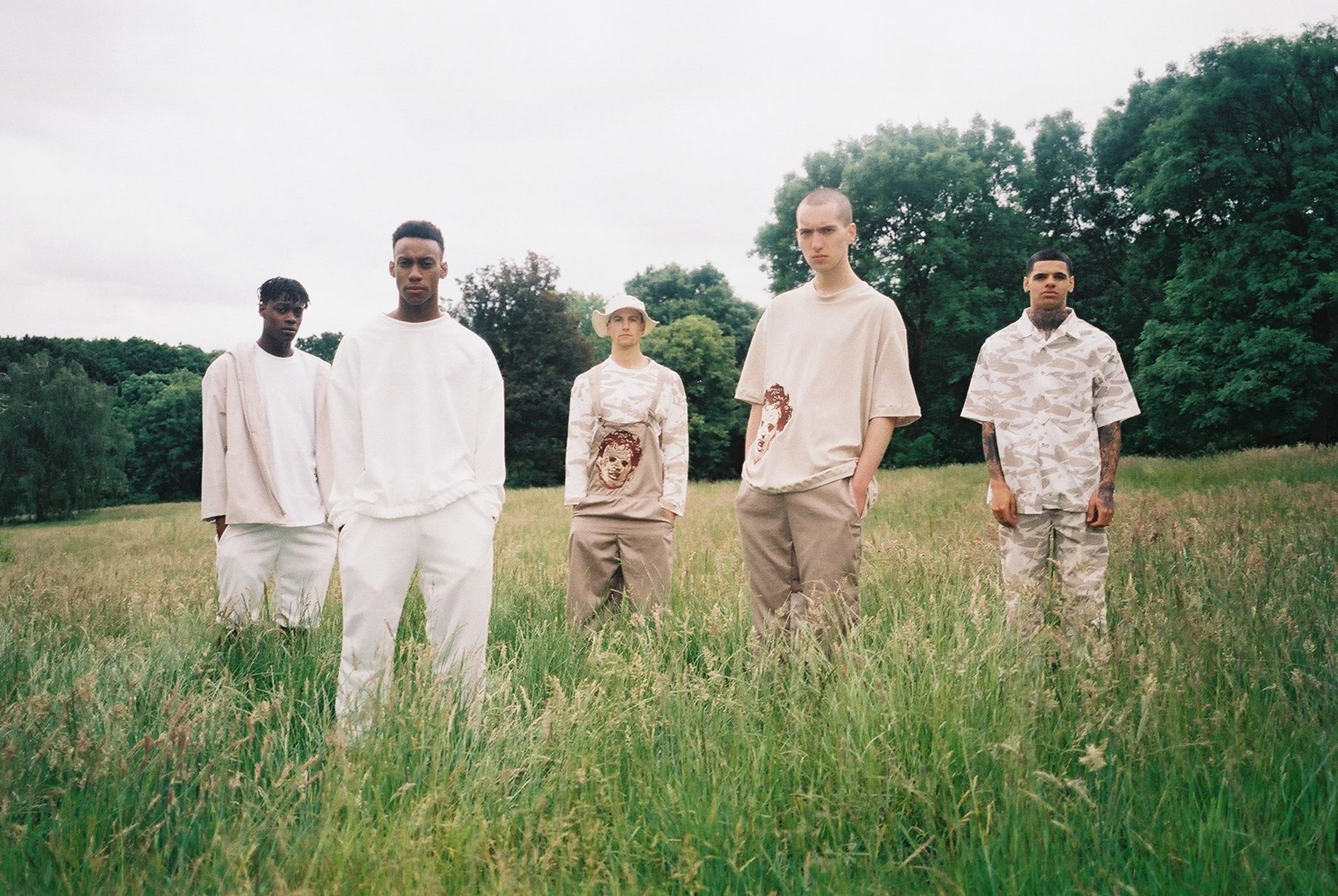
Kaunas has been living in a full cultural rhythm since the beginning of the year, and on June 29, one can expect to reach the apogee of cultural experiences: the city will be covered by the Storm festival activities and the expression of various types of art - from quality music, contemporary art, dance to the presentation of design works. The latter, a design genre, will be presented by a young and highly talented British designer, Ruth Peterson. The clothes created by the artist are inseparable from music: the first clothing collection was immediately noticed by rap music performers, and because of that Ruth was called a rap fashion designer. The debut collection t has become a real springboard to success: rap artists such as SKEPTA are adorned with their clothes, and the first collection was presented at one of the biggest fashion events for young talent - The Graduate Fashion Week Gala.
Clothing designer Ruth Peterson will come to Kaunas and present her work in the framework of the Storm festival on July 1st in the fashion show “The Residence”: during the presentation, it will be possible to see the clothes of the debut collection and the new collection, which has never been seen before. We’re talking to Ruth Peterson herself about the path to the fashion world, the rap fashion these days, and what kind of message we’d like to convey to young creators.
Ruth, in a few days you’ll visit Lithuania for the first time. Do you know something about Lithuania, Kaunas? Some interesting facts or something like that?
I think my dad told me that in Kaunas lives a monster (Kaunas Beast - Editor’s note), obviously as my brand is horror-inspired, I was a bit excited about that. And I really like it!
Your first collection was inspired by the famous movie “Texas Chainsaw Massacre”. It’s a horror movie. Why did you’ve chosen the horror genre?
I think with horror films, it's like even if people don't necessarily like them or they're scared, there's something that's quite endearing or something that captures you. If a new horror film comes out in the cinema, then everyone goes to see it just because they want the thrill. I thought it was quite fun to kind of bring that into clothing just to keep people excited a bit.
And are you a lover of horror movies?
I actually scared very easily and I jump a lot (laugh)! But what I love about horror genre movies is there are always loads of hidden meanings. For example, if you watch it the second time, there are more
things that you find out. So I think I like the detective work behind it. I like layers and twists and things like that.
Ruth, please tell us about yourself. How did your career in the fashion industry has started and where are you now?
I started getting into fashion when I was in school. When I was a kid, I used to try and draw wedding dresses or whatever, and then as I got a little bit older, I asked my dad if I could spend my free periods in school with a tailor so that I could learn how to do things. I wanted to be a tailor but thought it may be too specialised at such a young age and decided to study fashion first. Now I combine my knowledge of the two.
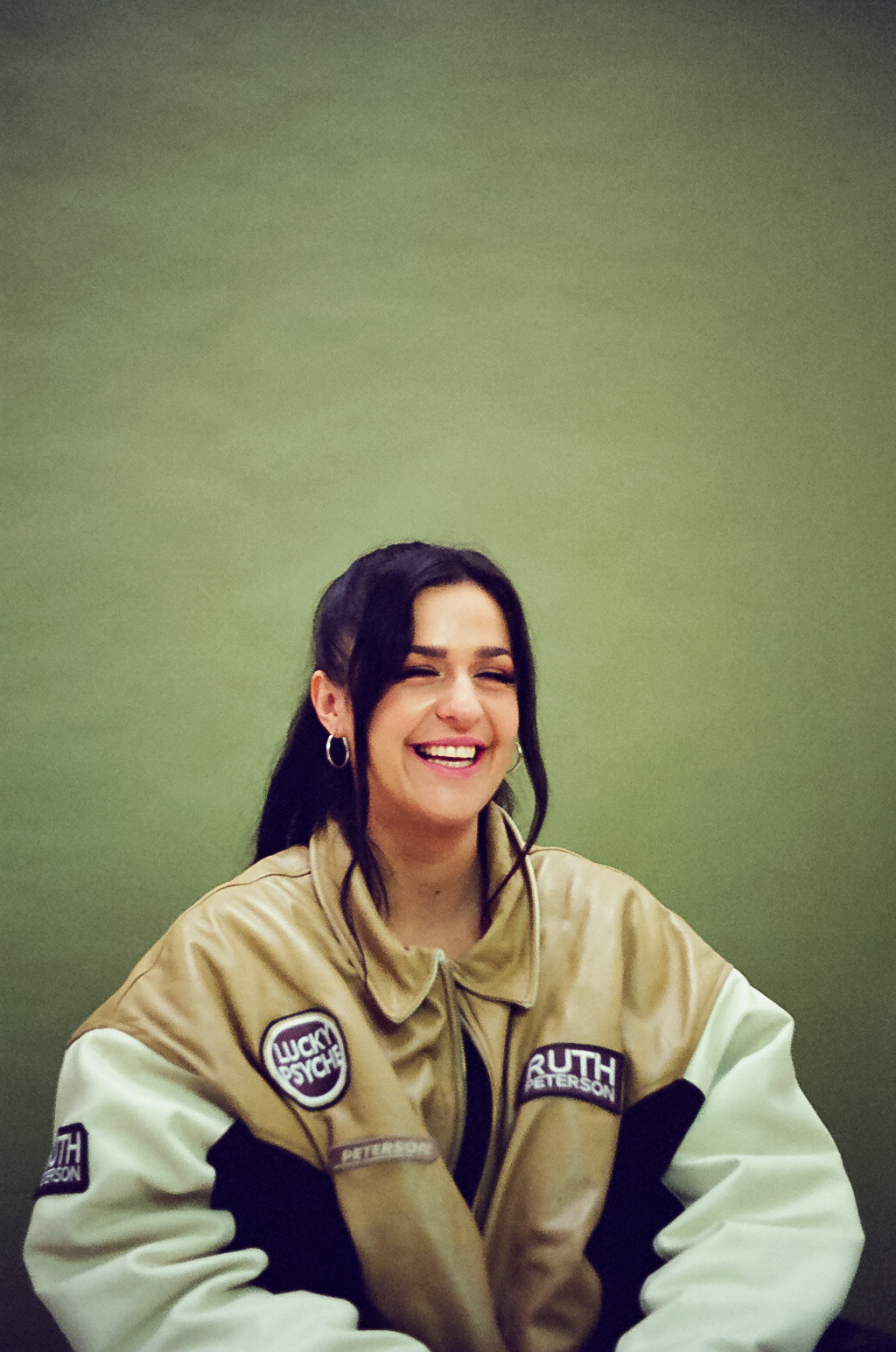
Here, in Lithuania, you are presented as a rap fashion designer. Do you agree with this definition? Or maybe you would like to be just called a designer, without a narrow area.
To be honest, the way that I want to go with my brand is to collaborate with different artists to create iconic pieces that they can perform in. I guess there's an element where rap artists were really interested in what I was doing. I think because it was different but without being like too over the top. It was quite subtle and people liked that. The thing with rap artists is that a lot of their music is inspired by a lot of external references - like movies, and poetry... They reference things and my clothing reference things, that's why it kind of went hand in hand. But yes, there are definitely sides of the business where I want to appeal to working with celebrities and artists to do custom pieces and then obviously their followers are kind of the rest of my target market. I don't want to be exclusive, I do aim to be inclusive. But I do also like to collaborate with kind of hip hop artists and rock artists because I listen to their work.
Could you describe how the trends of rap/hip-hop fashion changed from the - the ’90s when the rap culture was blooming and booming? What trends/brands define rap fashion nowadays?
I think men have become a lot more open to experimenting with different styles. With streetwear, there is a lot less of a divide between women and men. And I think men are being a lot more open to wearing more feminine things. Even when I started designing at University, I saw a lot bigger, baggier silhouettes - which I still love, but now, there’s been a lot more experimentation with silkier fabrics, prints or flared jeans. There's a lot more than you can do now and I think it has changed a lot. It also depends on the artist themselves as part of the artists’ brand is their styling.
I’ve noticed that several times you have mentioned the importance of references. What kind of references we cand find in your clothing? What is inspiring you?
I think I use my clothing as a social commentary: I'll see things that are going on in society at the minute and then juxtapose them with some horror films that I've been inspired by. In the past, I’ve had a lot of fun playing with the idea of consumerism - the irony being that fashion is a huge part of it.
Recently there’s been a big movement in positivity and mental health. So actually, some of the phrases that I've used in the collection that I'm going to show in Kaunas will link to that. Even though I'm inspired by horror films, quotes like - “I'm not scared!”, are more mean “I'm going to put myself out there”. I see it as a light-hearted spin phrase you might say when watching a horror movie but also with a powerful message behind it.
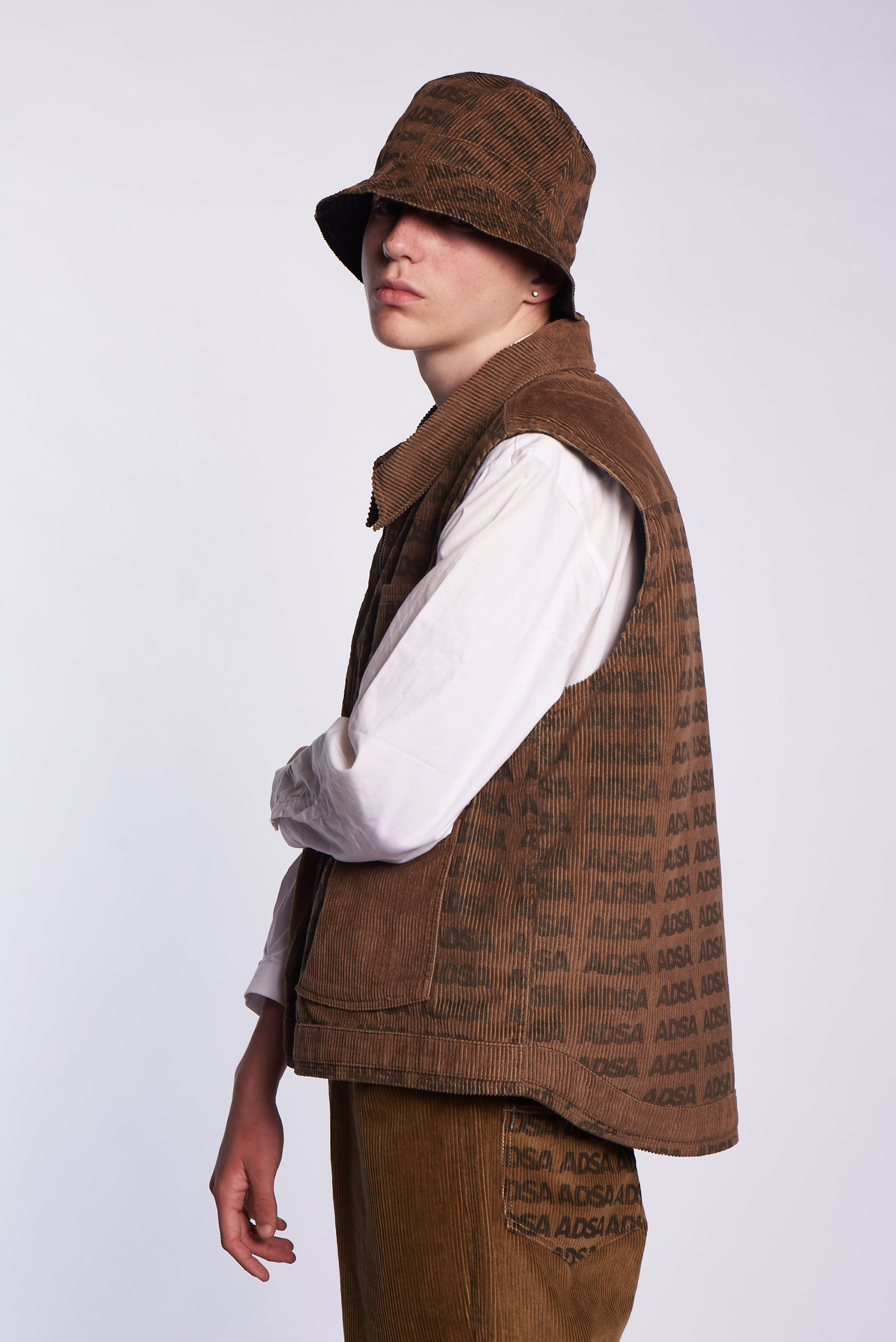
Let's talk about Kaunas. You will present your works at the festival AUDRA/Storm in Kaunas at the end of June. What we can expect - if it will be your debut collection of design works or we can expect new ones? In what form we’ll see your clothes?
It will be a part of the fashion show so models will be wearing that. I'm still making some new pieces at the minute, that I'll be showing at Kaunas and it will be the first time anyone has seen this work, so
it's brand new. I've used some of the old prints and things that I've got but there are a lot of new things, therefore, I'm excited about it.
Where are you now - can we expect a new collection in a near future? Are you planning collaborations with brands and music artists?
I've got one collaboration coming up, I will not reveal it now because I would like to keep it exciting. I'm also bringing out a fun but educational video series called “Truth with Ruth” it's for advice for designers or people who want to start brands on the hurdles that you might face with an expert’s view. It is a mini-series covering topics like how to find motivation, protecting your work (with a lawyer) and then about production and what it really costs and how much it goes into it. Just because I feel like there wasn't a lot of help around that when I started and I think not as many people talk about it so that's going to come out next month as well.
Thank you, Ruth. Looking forward to seeing you in Kaunas!
The programme of the Audra Contemporary City Festival is co-produced by the youth organisation "Kylantis Kaunas", "Freimas" and the team of the nightclub "Lizdas", together with Kaunas - European Capital of Culture 2022, Pažaislis Music Festival, Kaunas City Chamber Theatre, various partners from Japan, Greece, Serbia, France, Germany, Estonia, Finland and other European countries.
Interview author: Vaida Morkūnaitė
Kaunas “Summer Stage”: bold statements by the Ukrainian group FO SHO
Kaunas – European Capital of Culture 2022 is organising an empowering and spirit-lifting party for Ukraine day on June 11th. On that day, the “Summer stage” will be filled with powerful music and deep connection provided by the Ukrainian music bands TONKA and FO SHO. Members of FO SHO are vivid truth seekers. Their hip-hop and RnB style mixes with political and social topics. For the upcoming event, we interviewed the unique Ukrainian trio.
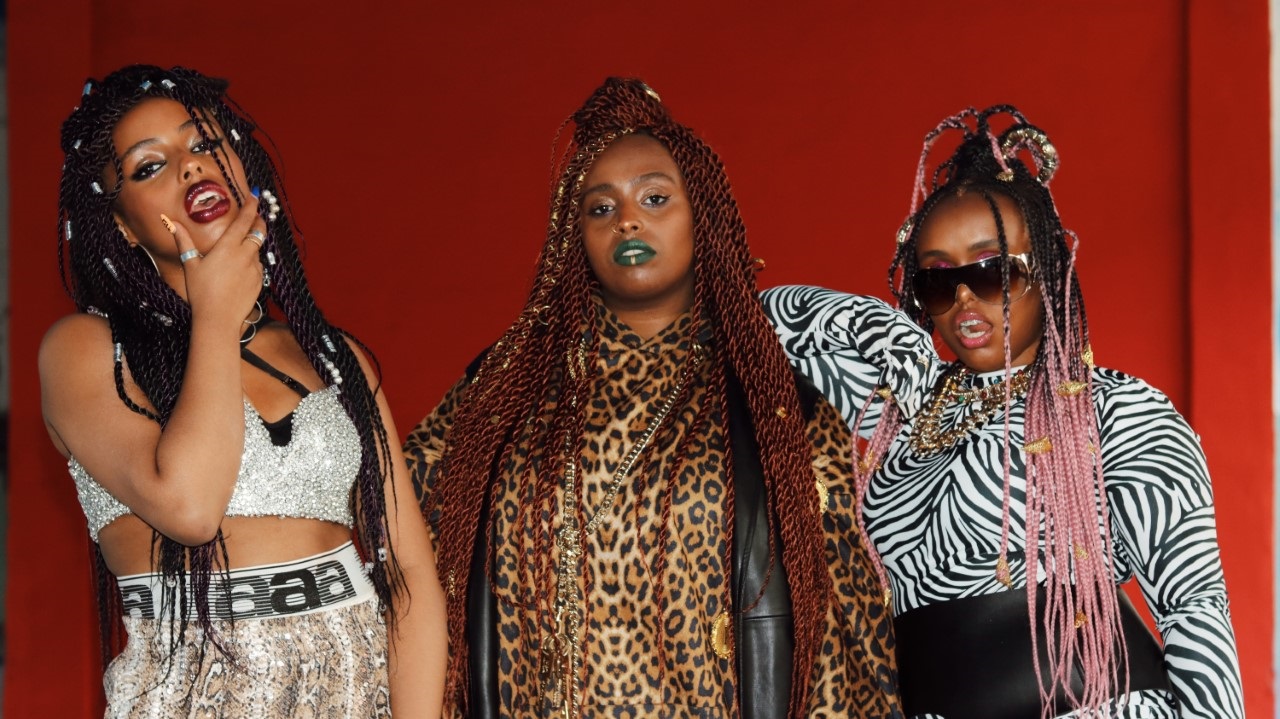
How did you come up with the idea of creating a band?
We are real sisters. We were always singing together and harmonising all our life. We knew that we had a huge age difference. I was older, and we will never be able to form a band. At some point, we took a selfie picture and understood that we looked like a band. I was writing a lot of songs, and I showed her a track called “xtra”, and she fell in love with it. And I said, “let’s do the song together”. And she said, “really?”. So, that’s how our first track came out.
Your songs are very empowering and energetic. Where does that power come from? What is the main message you are sending through the music?
It’s the fact that every person has their unique side, craft, you name it. And that makes every person stand out. And as soon as you find your craft, you are extra. And by the time you are born, and you have a life, you’re son or daughter or parent, you are a human being - you are extra. And everybody has their own background and their own shape, and everything makes us stand out somehow. So, if you think that you have some imperfections, it actually becomes perfect and makes you interesting and extra. We are trying to empower and give people the energy and remind that they are unique and beautiful. Each and every one of us. We also grew up in unique surroundings ,– we were black girls in a Slavic world, and we had our own struggles. In every country, people can find their own stories and be inspired by them if they look from the other side. Not from the negative but from the positive side.
Few days ago you were performing in Forbes Under 30 Summit. You were rapping in the Ukrainian language. Some would say it’s impossible. How did you come up with rapping in your language? Is it new or common in Ukraine?
It’s a new way. It’s a new way because hip-hop hasn’t been popular in Ukraine at all. Ukraine is a Slavic country, and here, in Russia, in Belarus, in other countries like that, they are more into balladic music. So now hip-hop has become interesting nowadays. It’s a challenge. It’s something new. Some say it’s impossible, but we can make it possible. We accepted the challenge. We love our language, and we are exploring it. We are now writing in the Ukrainian language because it is vital to support the culture, especially in these hard times.
Your band performs in international concerts. Isn’t the Ukrainian language a barrier to understanding what you are singing about?
First of all, music is a universal language. Sometimes we like songs without understanding the language, but you can appreciate the beauty of the music. Secondly, the Ukrainian language is a challenge. And not everybody will understand it, but everybody will be able to see the beauty and how this language tastes. It’s a new flavour, and it’s awesome. In order to make the message more digestible, we wrote our first singles in English mostly, because we had something important to say and we wanted the world to understand it. We also wrote a couple of songs in Ukrainian language. During the war we released a song called “U CRY NOW” and it’s both English and Ukrainian.
Regarding the situation in Ukraine, do you think culture, for example, music, can be the right tool to fight in this war?
Yes, absolutely. Culturally music is a tool to say our truth and speak the truth. Also, we are using our pages on Instagram and Facebook to spread the truth about Ukrainians. And you know, we believe that every craft or business can be used to create peace between nations.
How does your band work? Do you write your songs and music yourselves?
In the beginning, I (Betty) used to write the songs that we recorded. And now Siona is in the process and writing together with me. We are our own producers. We understand what we want. We work with arrangers but we usually lead in the production process. Siona is a professional piano player, Miriyam is a professional violin player, we use these crafts in our music creating process too. We all are working for the same purpose.
What is your purpose as a band?
Our segment is hip hop and r&b. Hip-hop was always about the meaning, the statement you want to talk about. So, we are always about the meaning. If you check our song “BLCK SQR” - we are exposing the truth about Ukrainian artist Kazimir Malevich that Russian propaganda says that he’s a Russian artist. Meanwhile, he’s a Polish-Ukrainian artist born in Kyiv. We also talk about the fact it is a very weird world we live in. We have a lot of money for the covid, for war, for nuclear power, for bombs, but would we have enough money for those who die from hunger? Like, really, in Africa, Asia, many places. We have a lot of good things that we want to talk about. Political stuff. We are optimistic, but we are also about the truth and exposing the meaning that would help our society and earth become better.
Some say: don’t mix politics and culture or politics and sport. You are a perfect example that you must do it. But is it easy/difficult for you to reach that goal? Can music be taken seriously in this kind of topic?
Absolutely. During the war, musicians come to soldiers, and they sing and lift the spirit. Music has a huge influence on everyone. Whether you like it or not, it can switch your mood: make you sad or happy. We think that it’s a big thing and it has an impact on emotions. Sometimes people would like just to have fun: listen to music and dance not thinking about serious matters and that is also okay, but we also should not forget that music is a tool for a good change and that through music we can trigger people's mind to think about some useful topics. We think that right now, music has become so much about meaningless stuff, we want a change, and the change starts with us. There are people creating music with a meaning like Kendrick Lamar or Tyler The Creator, but they are few, so we are part of this minority in music field, that tries to talk the truth and make people consider other things and trigger their minds to think about some meaningful stuff. But we can also have fun. We are not always serious; we know how to have fun. So, we are creating balance.
You are coming to Kaunas “Summer stage” to perform for the Ukraine day we are going to celebrate in Lithuania. How do you celebrate it in Ukraine? Maybe you can share some insides for us?
Cultural food, like “Borscht”, “Palianytsia”. For example, whenever you meet someone for the first time, for the welcoming, we bring big bread that’s called “Palianytsia” and we bring salt, that’s how we welcome our guests. There's also salo, as jewish we don’t eat it because it's a pork meal but Ukrainians eat it. Of course, we sing Ukrainian songs, and we will teach you to sing them. We wear traditional Ukrainian clothes - Vyshyvanka. We also make a crown from different wildflowers like dandelions and cornflowers. Their colours represent the Ukrainian flag.
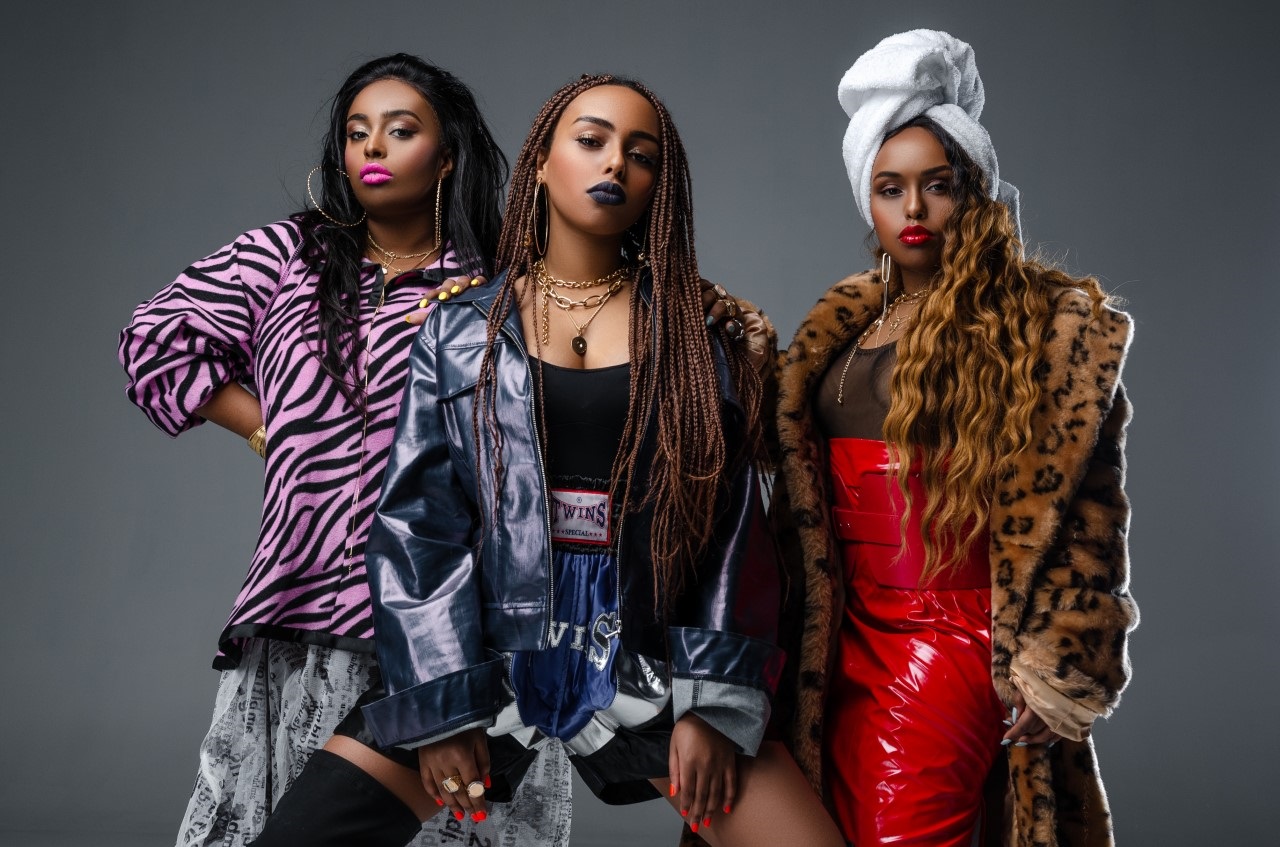
What greetings to Kaunas do you have?
We are super grateful for the support. It means a lot. You know, it’s like a brotherhood. Because first of all, we are all humans. We get a life in this world and become citizens of a country. We are all kids, and we are all human beings. And thanks to you for standing behind the truth and love. It’s a big thing, and it’s a blessing. We can’t wait to meet you.
Slava Ukraini!
Gerojam Slava!
Partner of the project: “Švyturys Non-Alcoholic”. Friends of the project - Ukrainian Institute.
For the complete Kaunas 2022 programme, please visit www.kaunas2022.eu or the mobile app.



